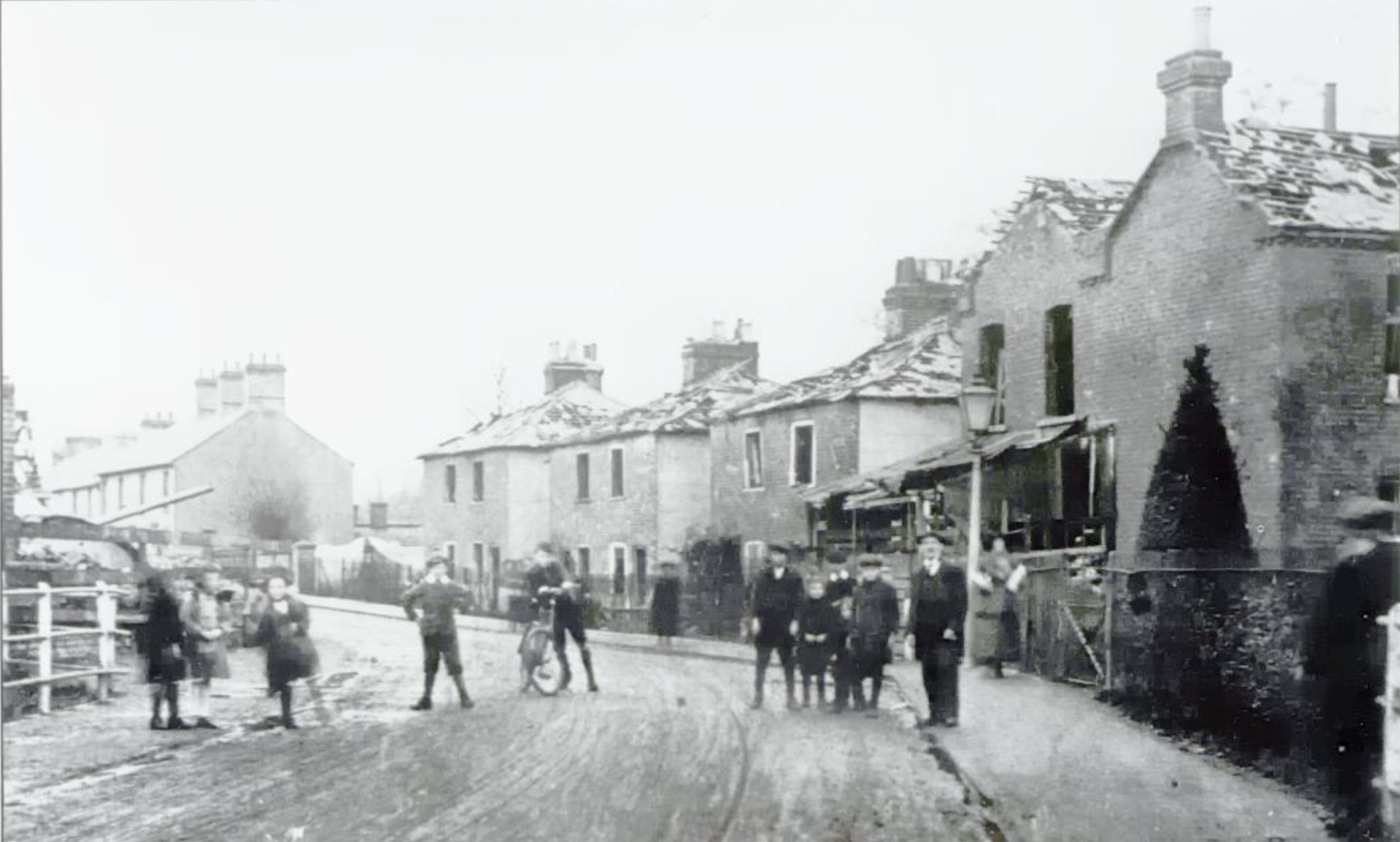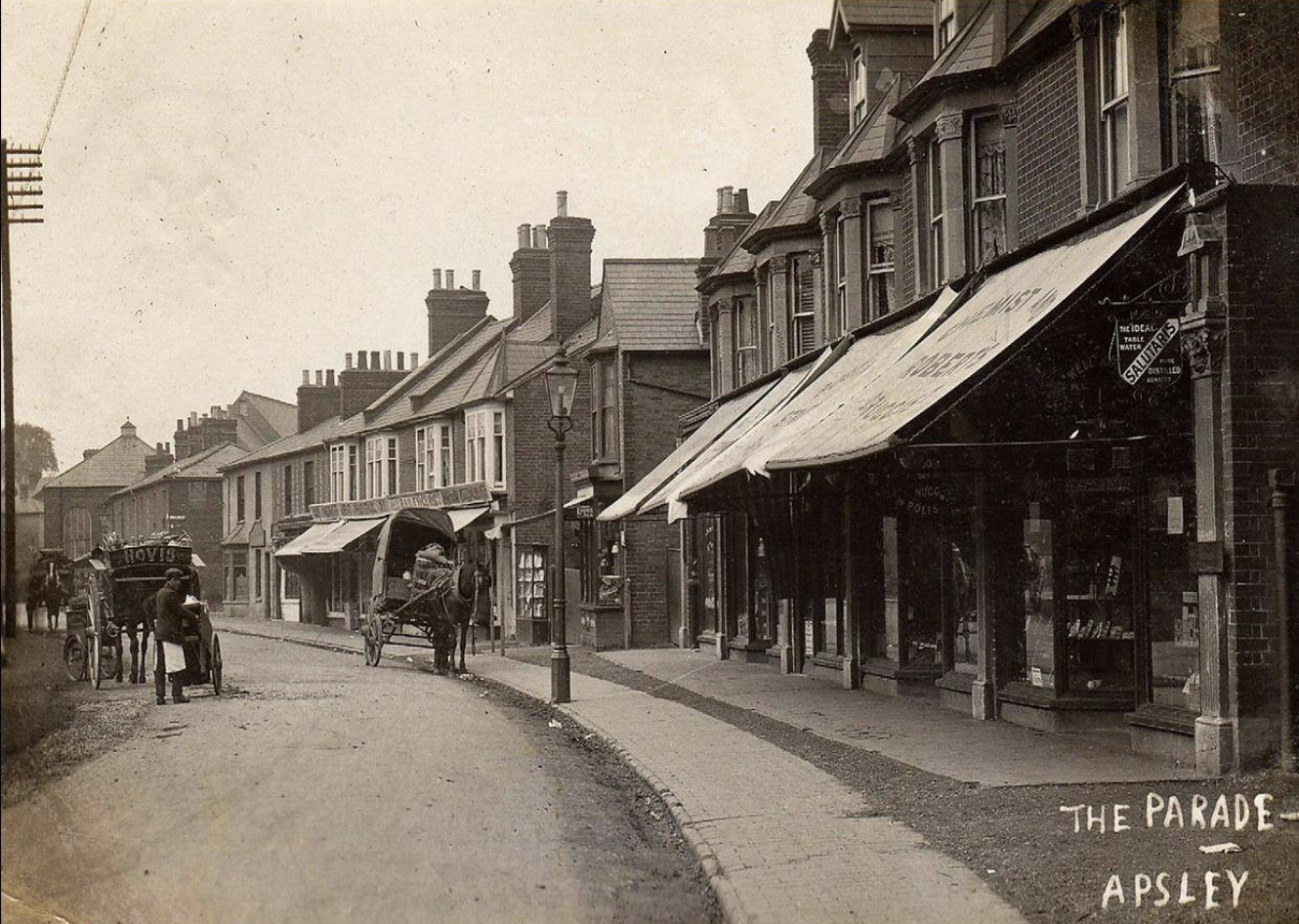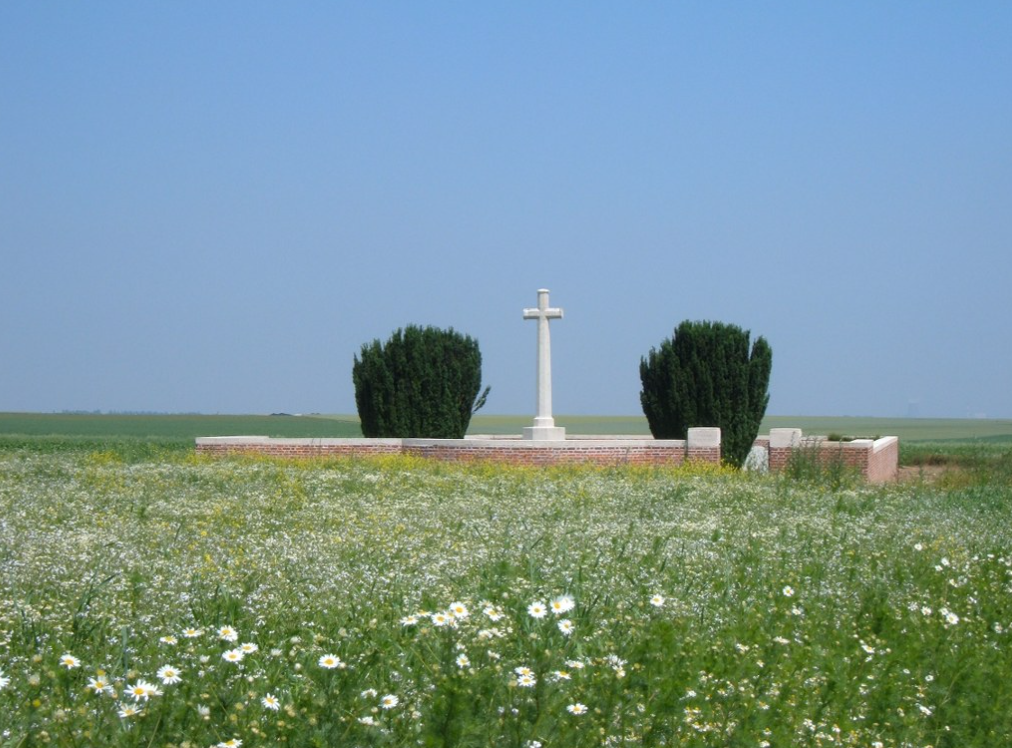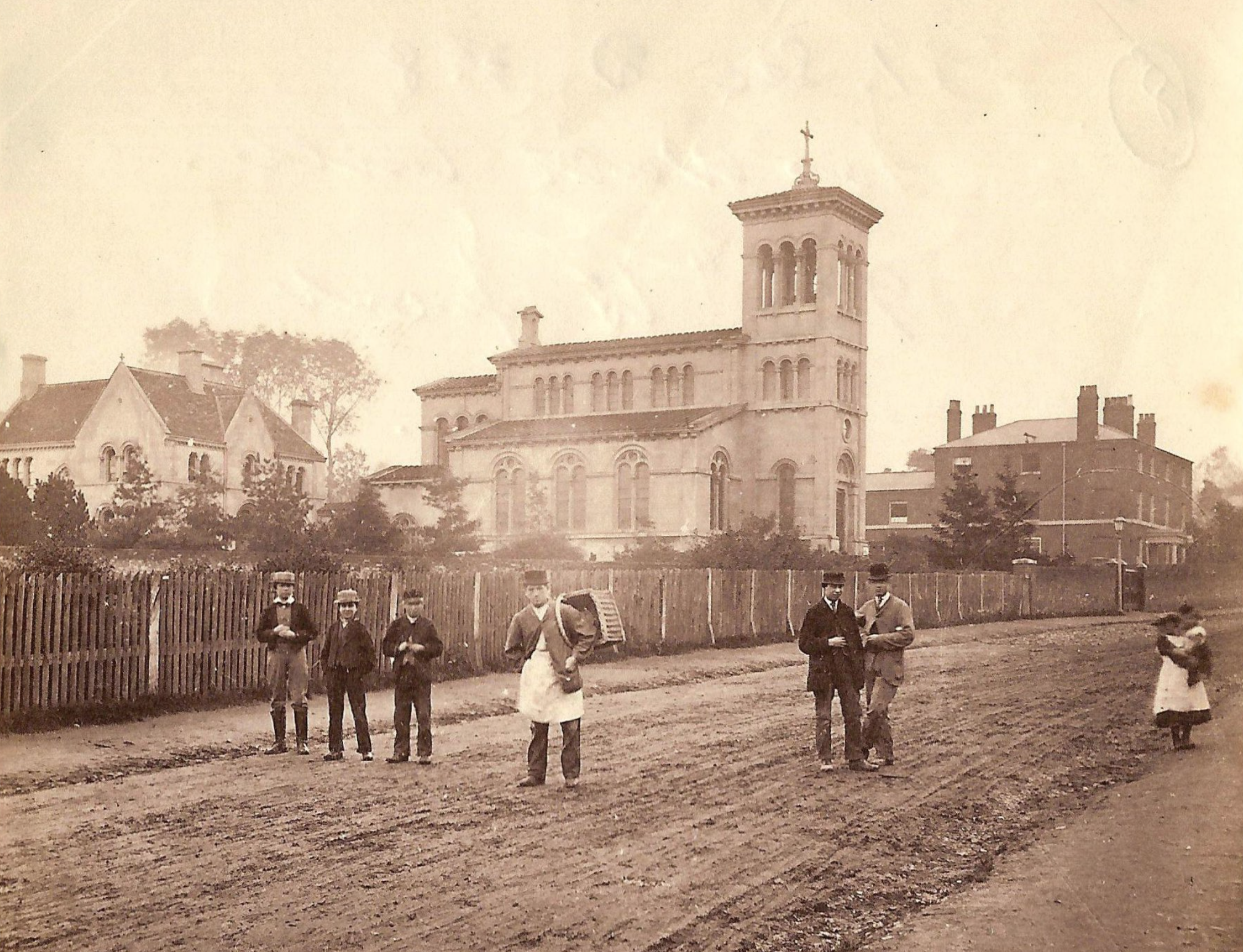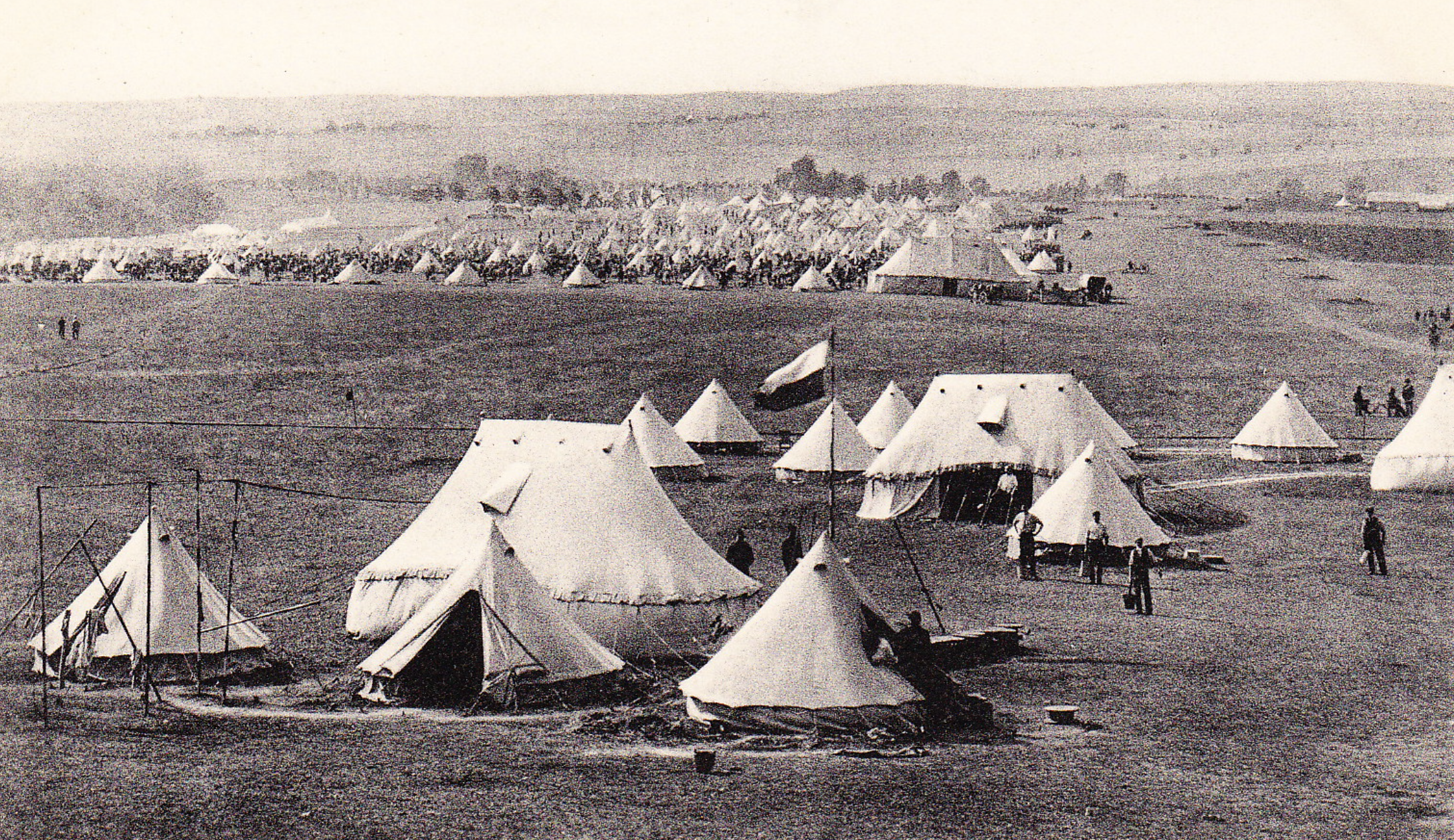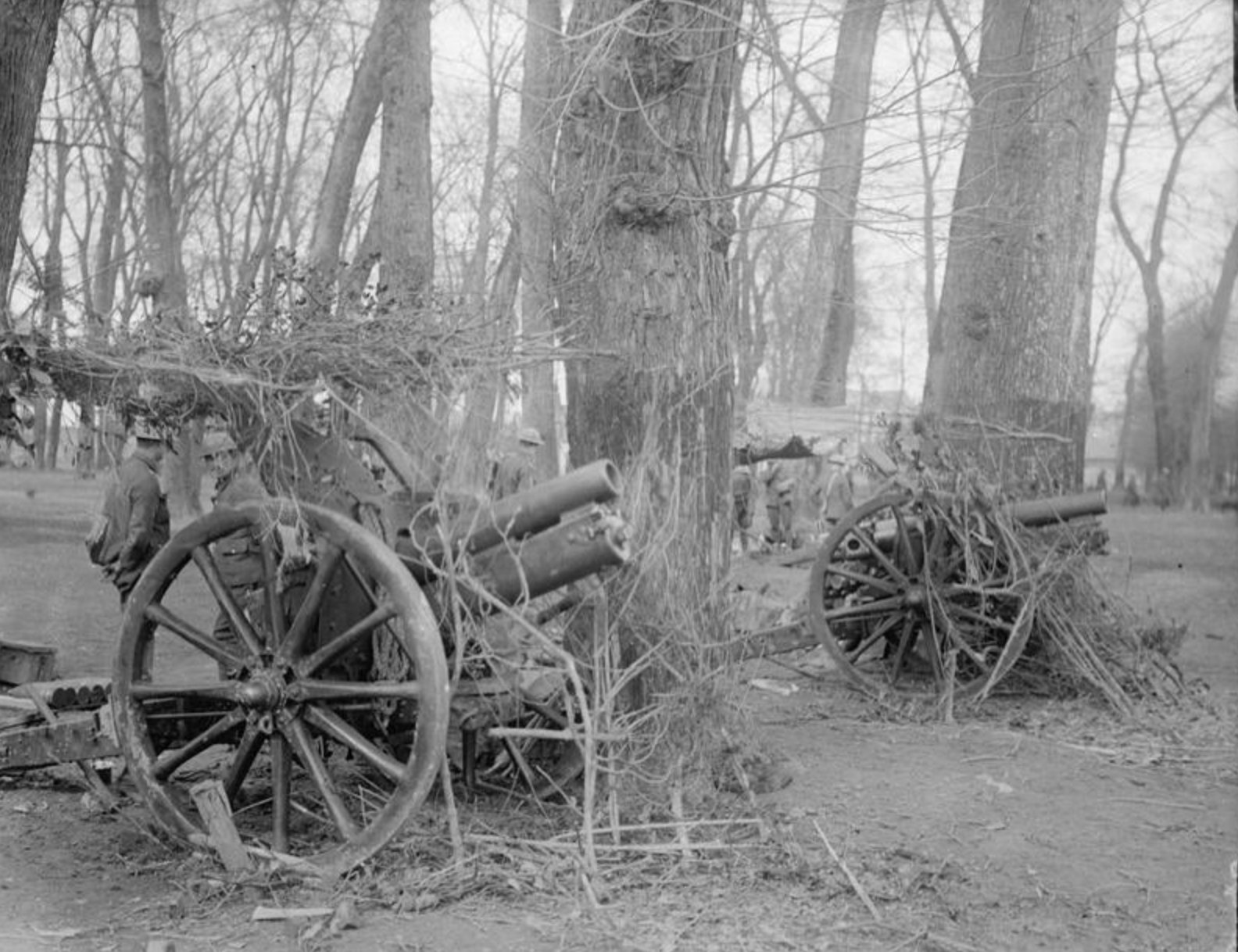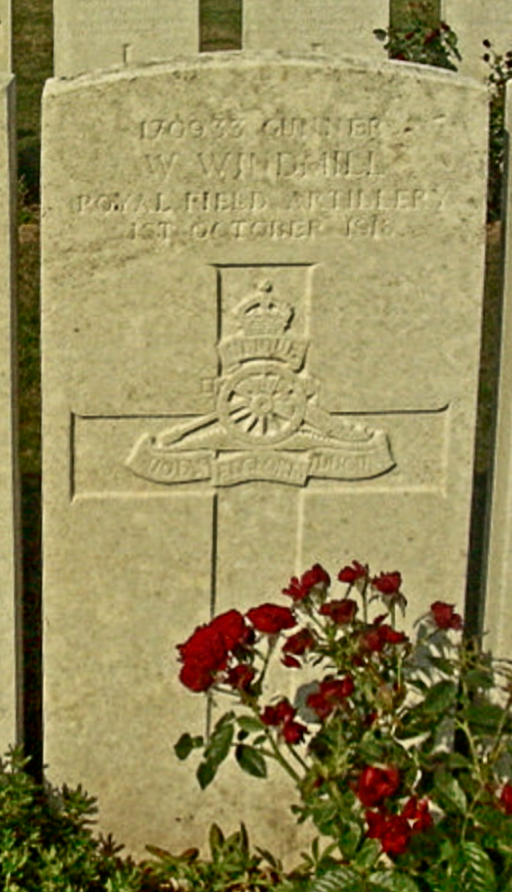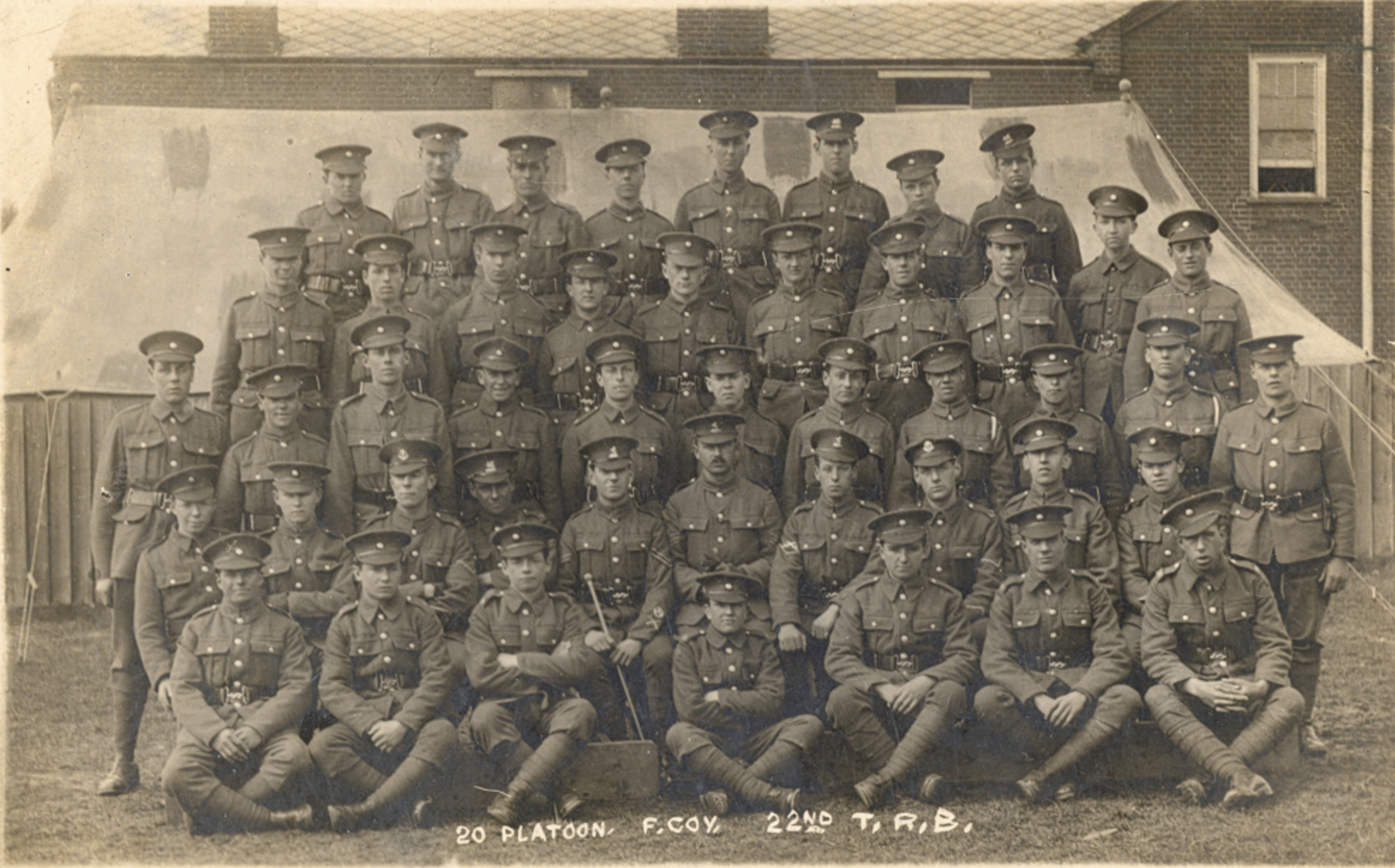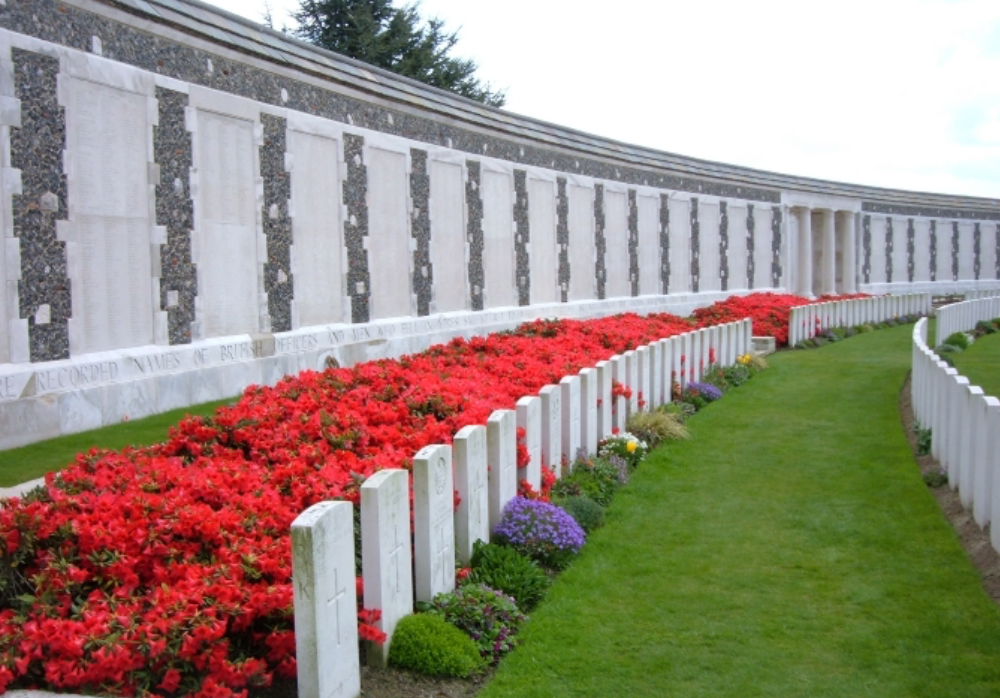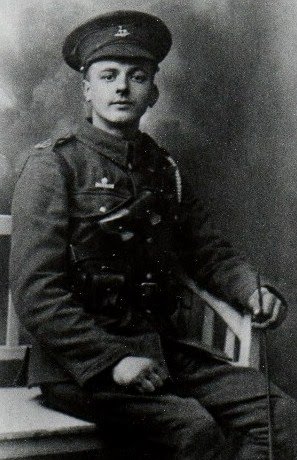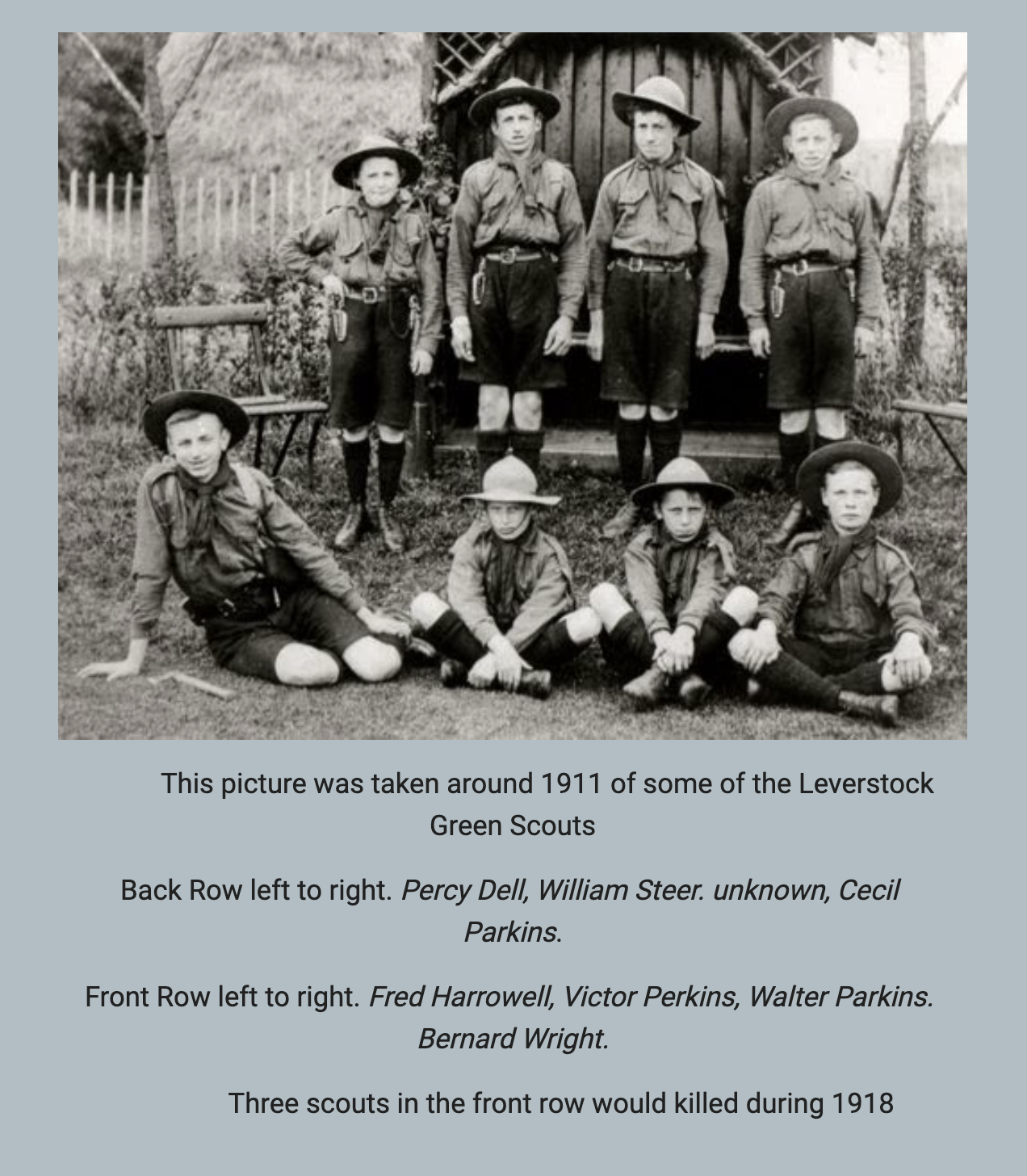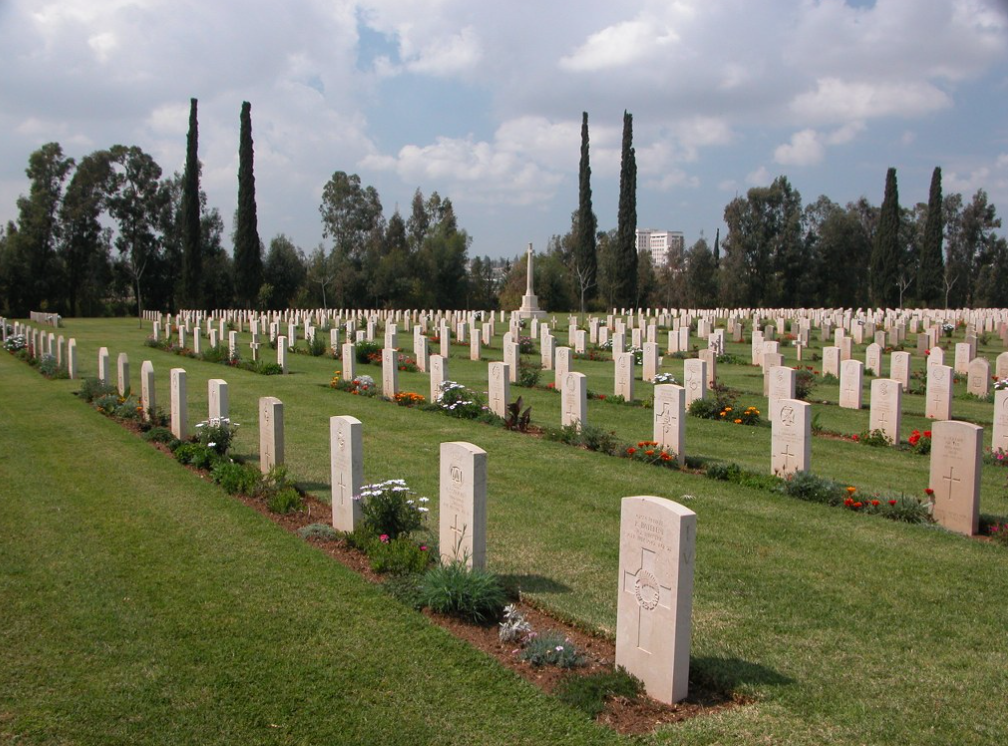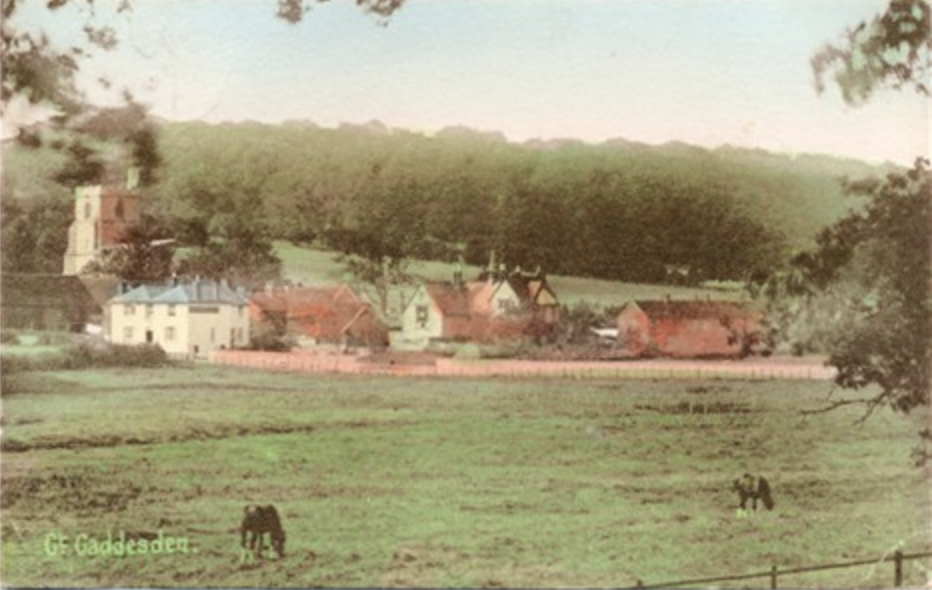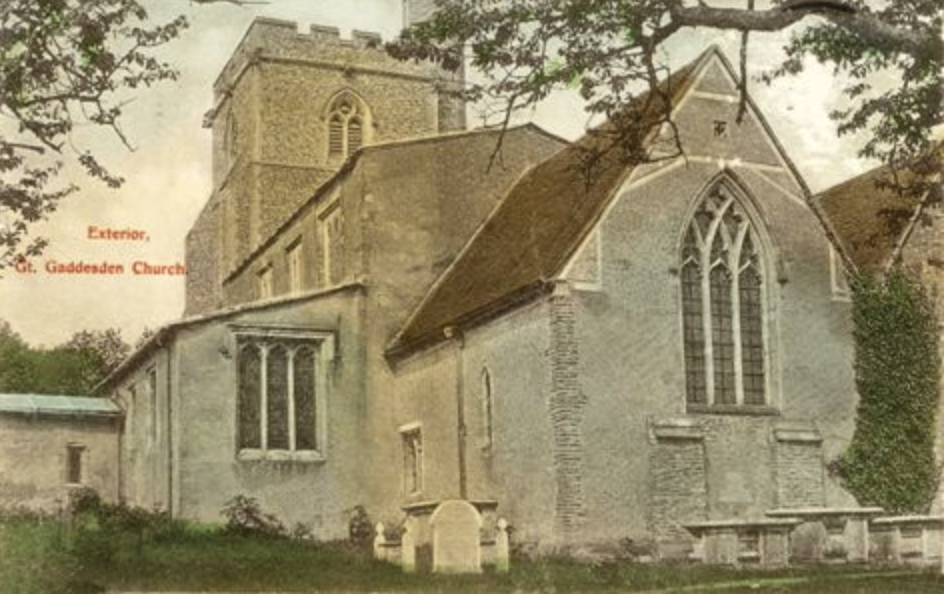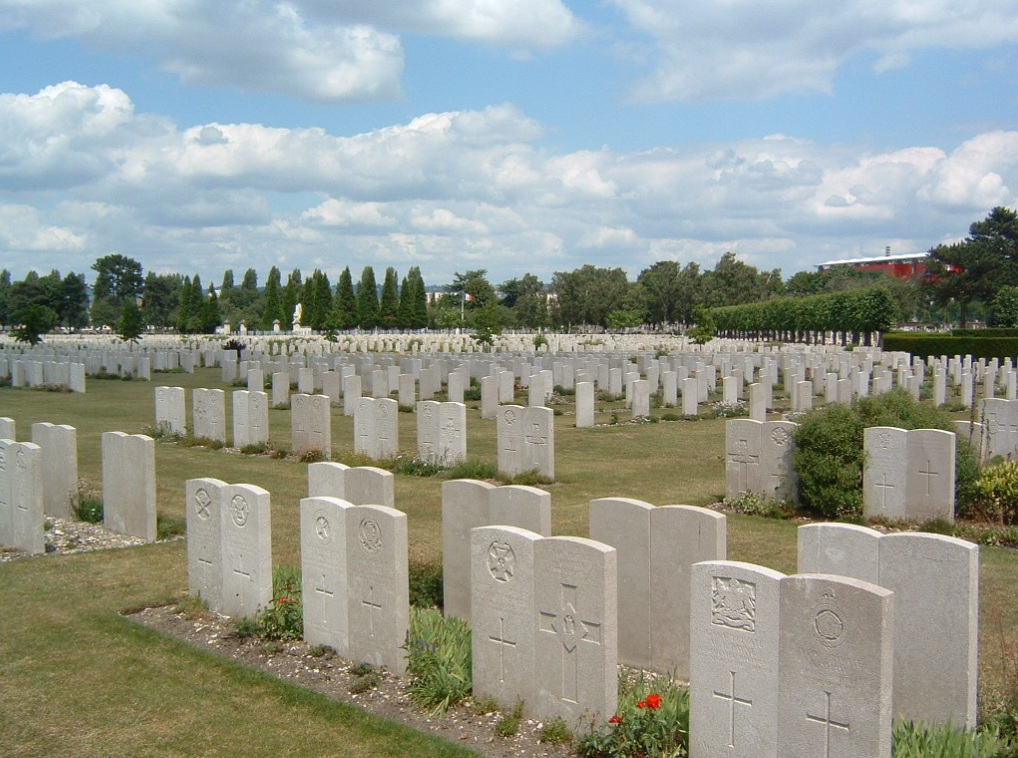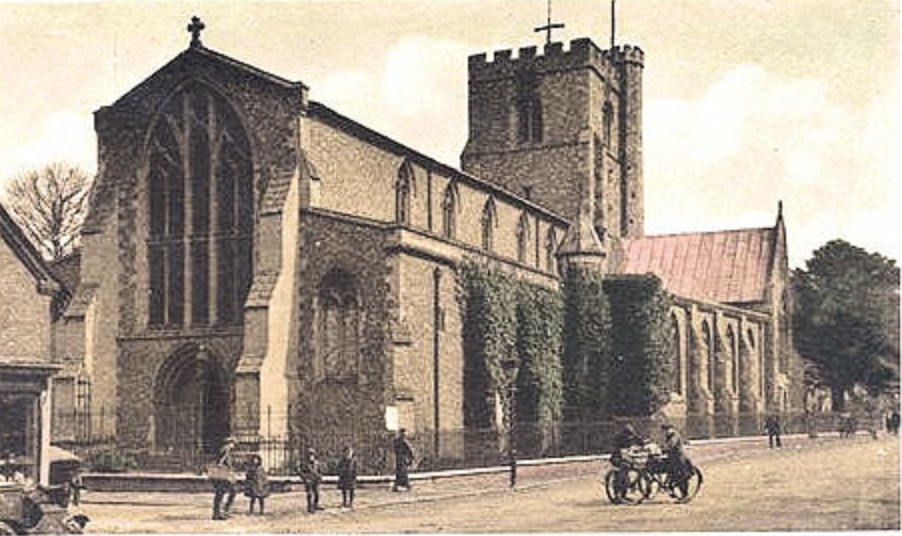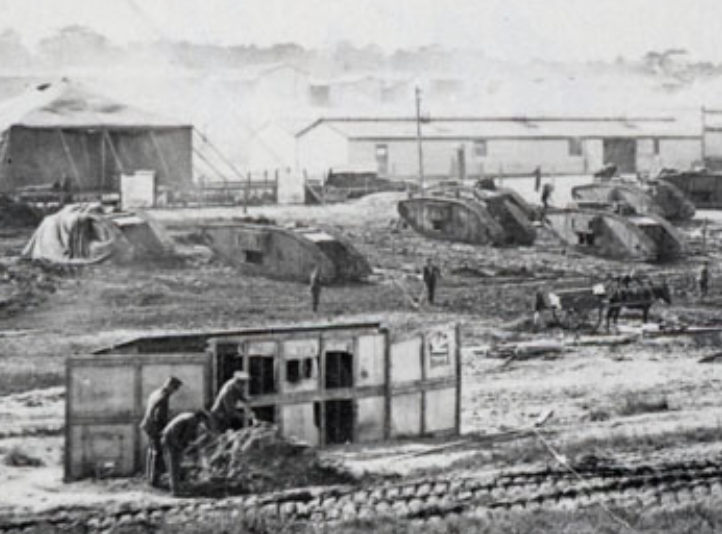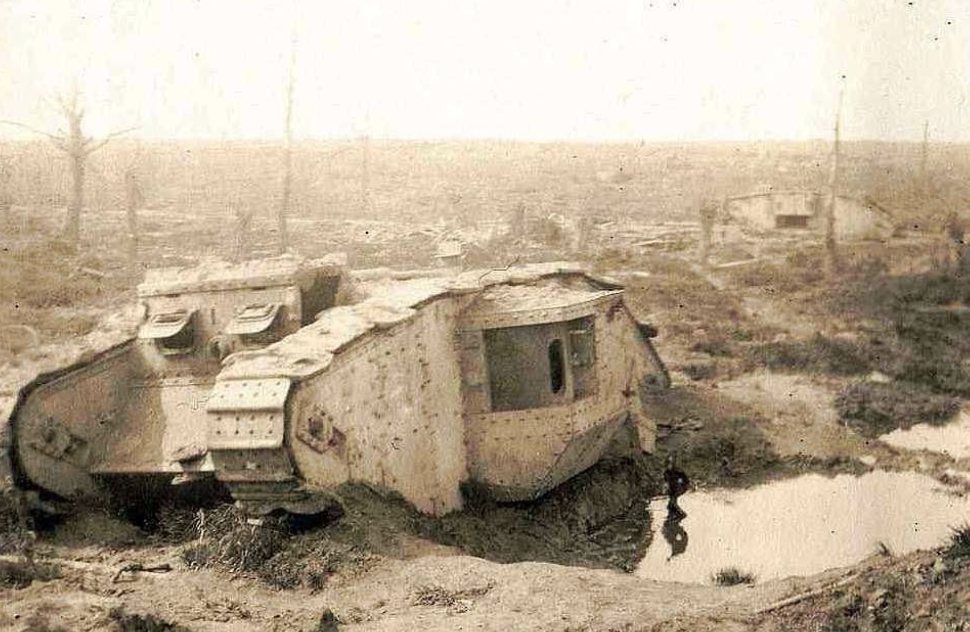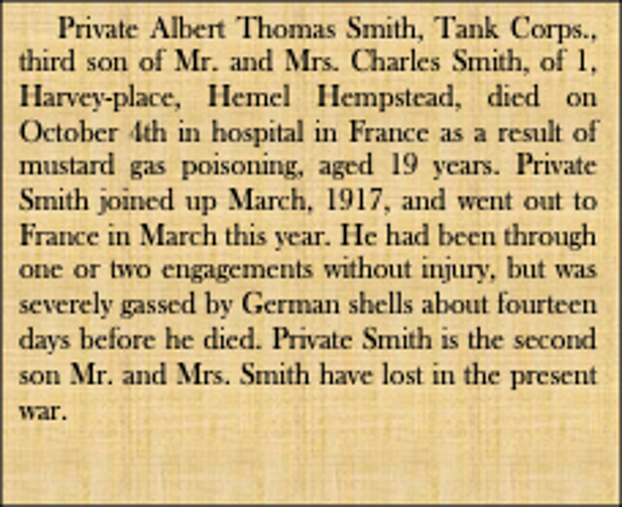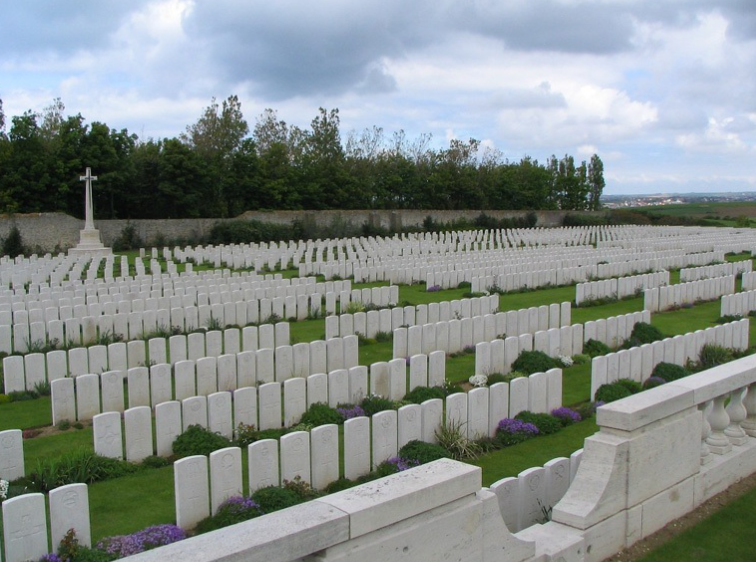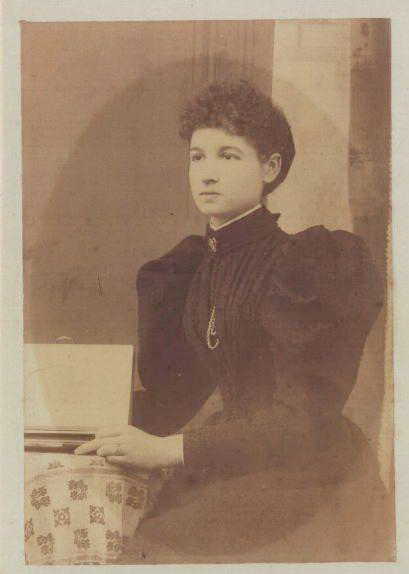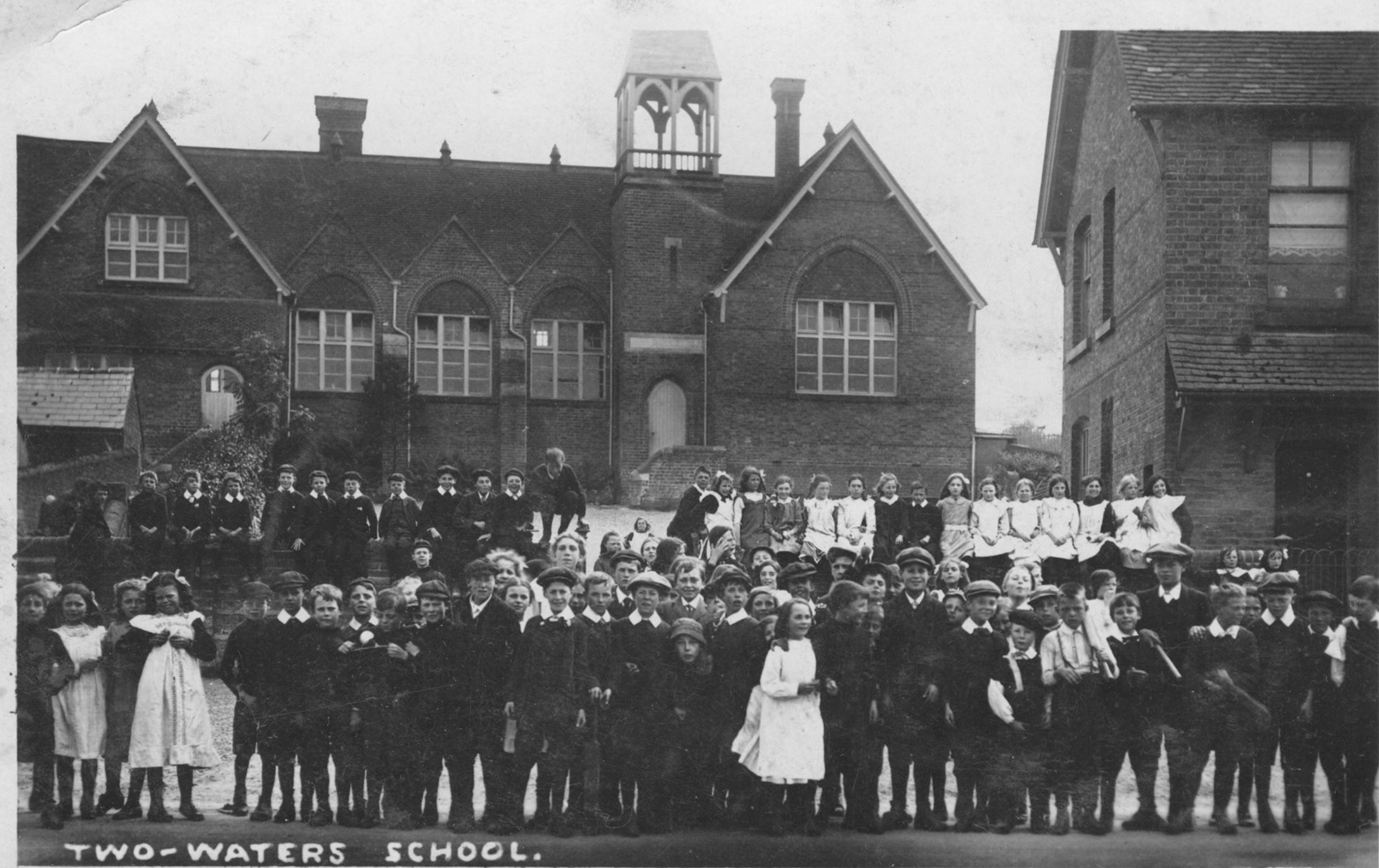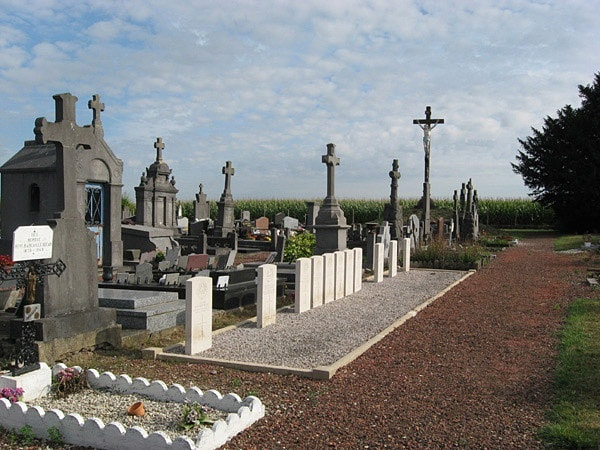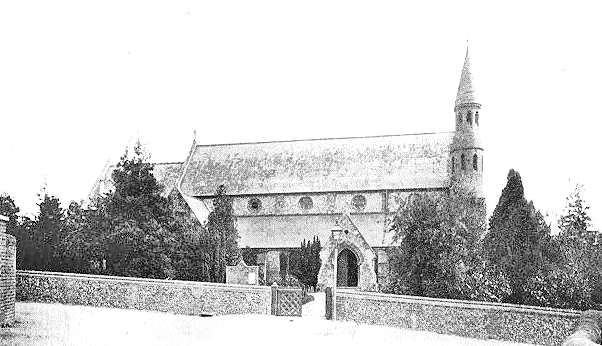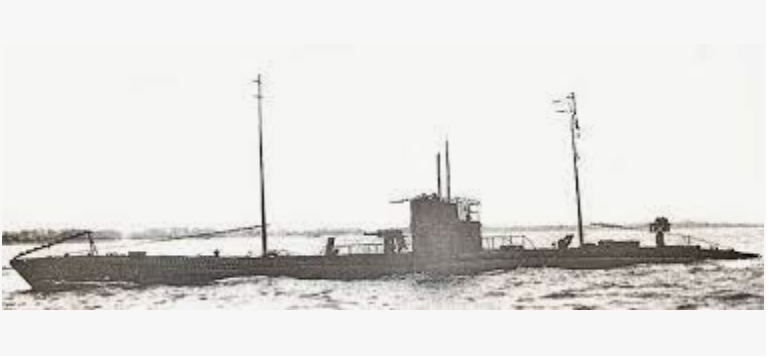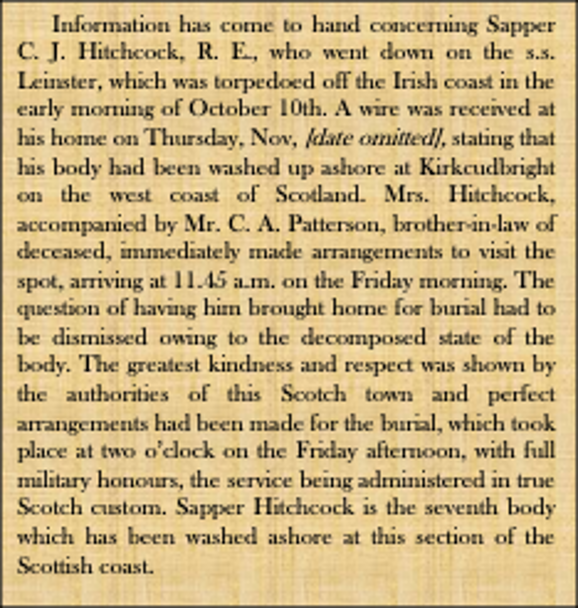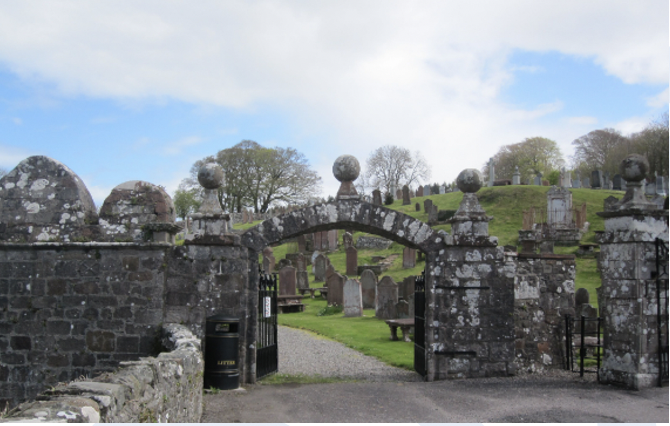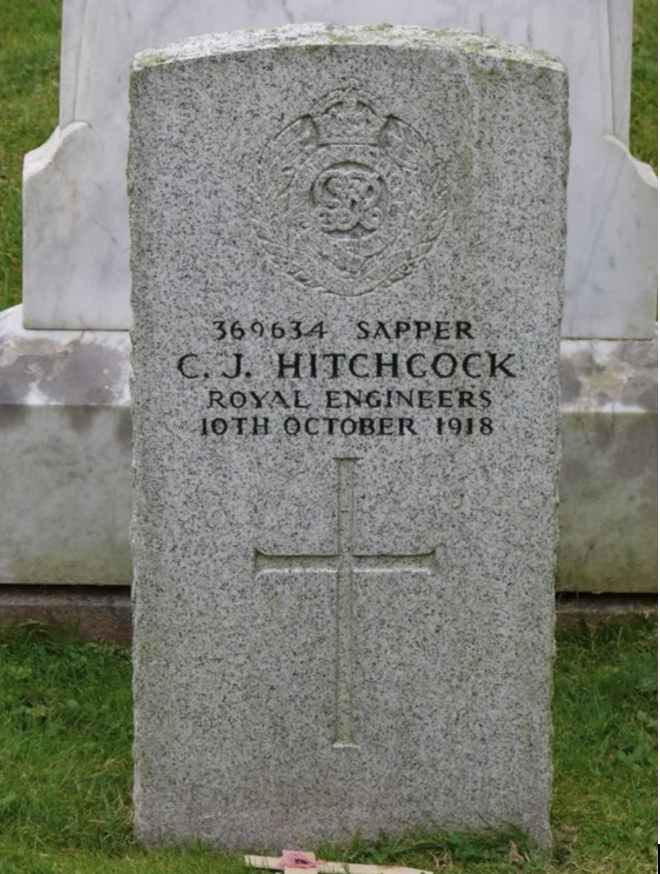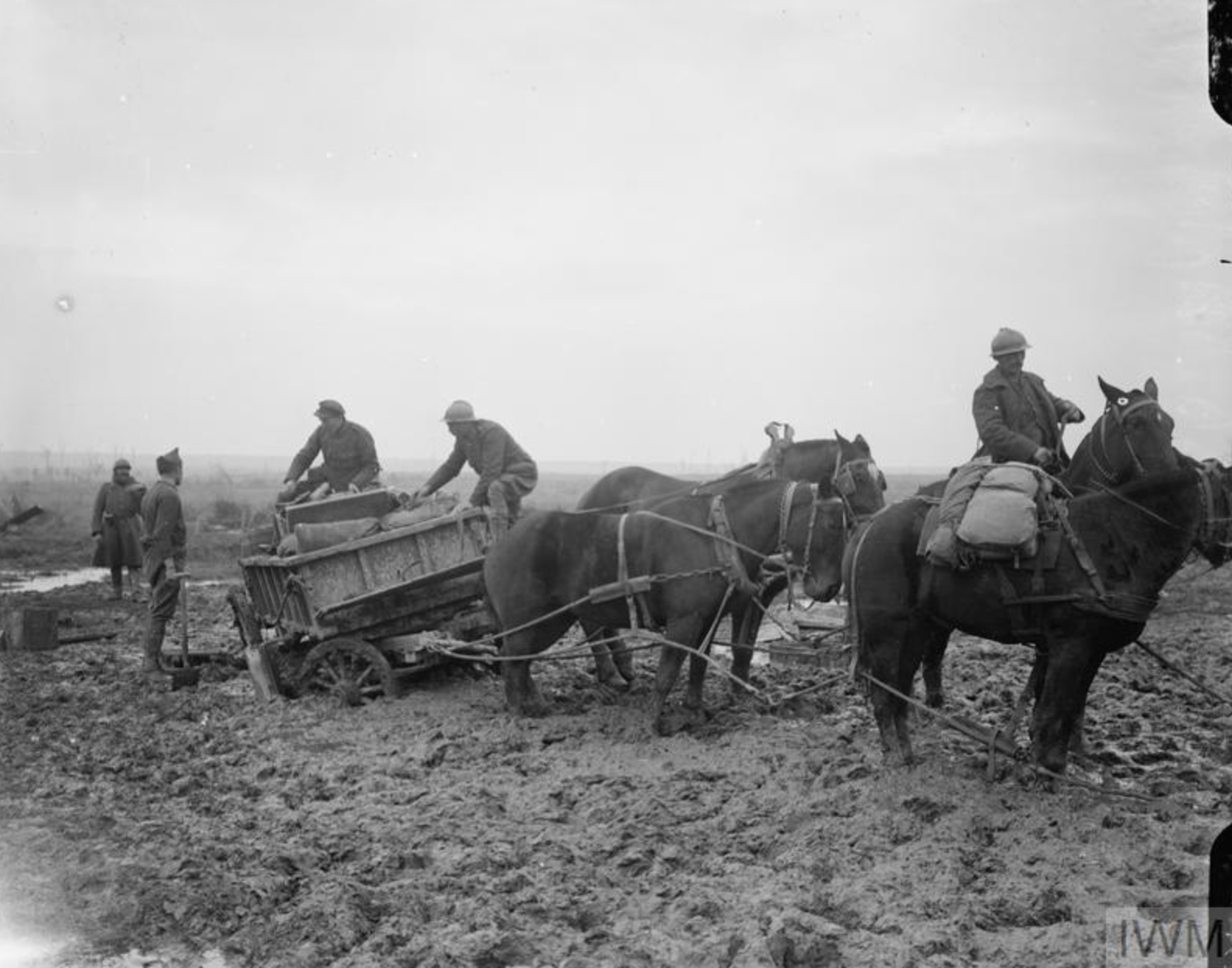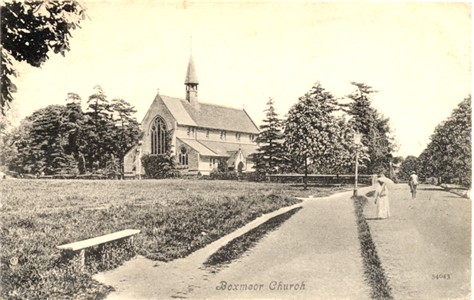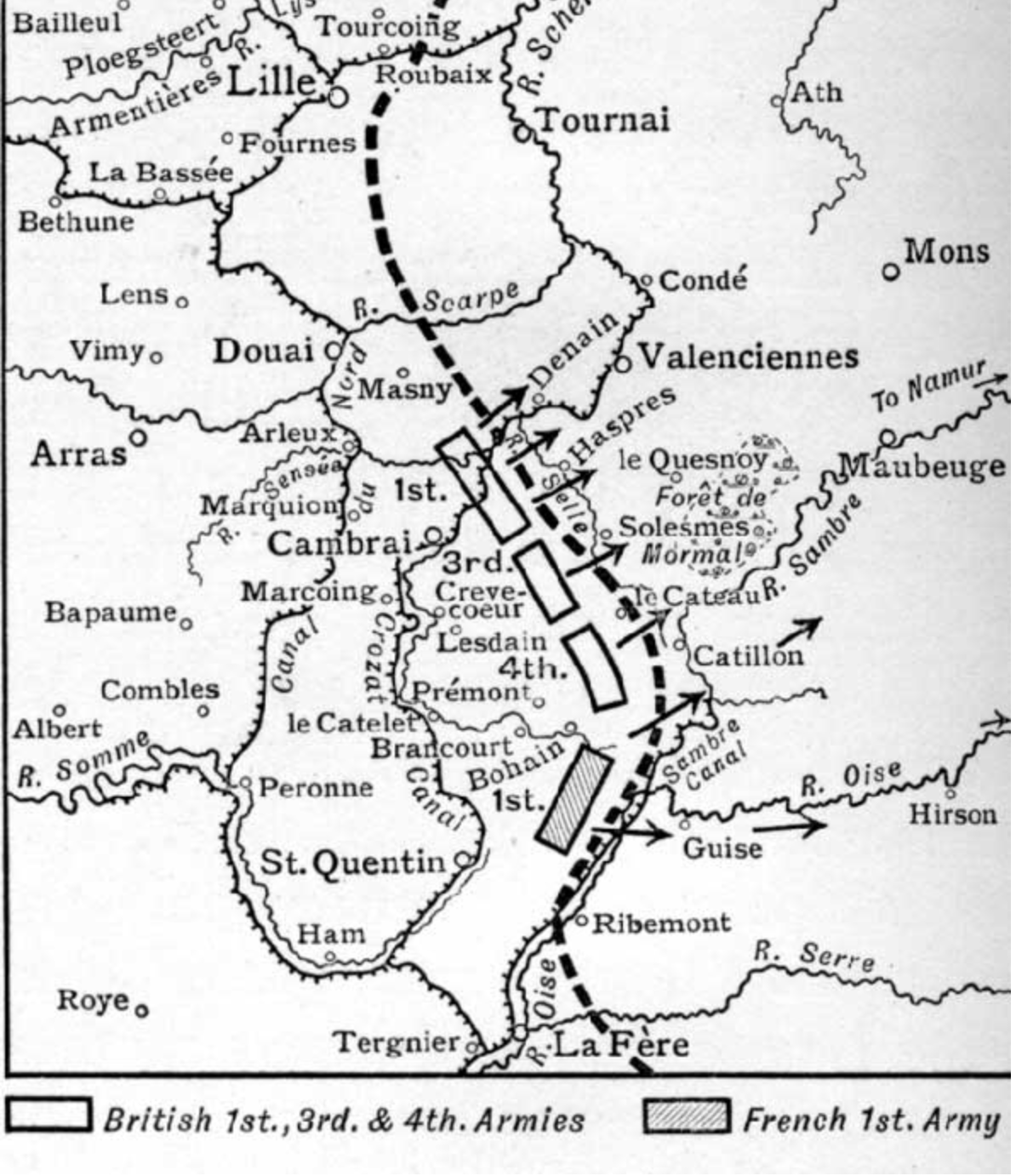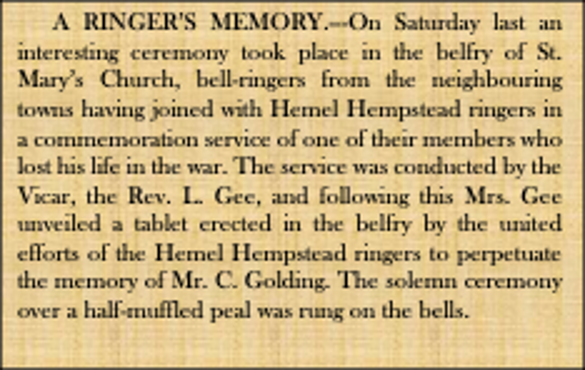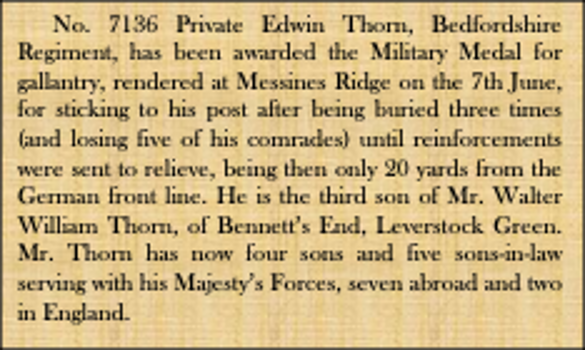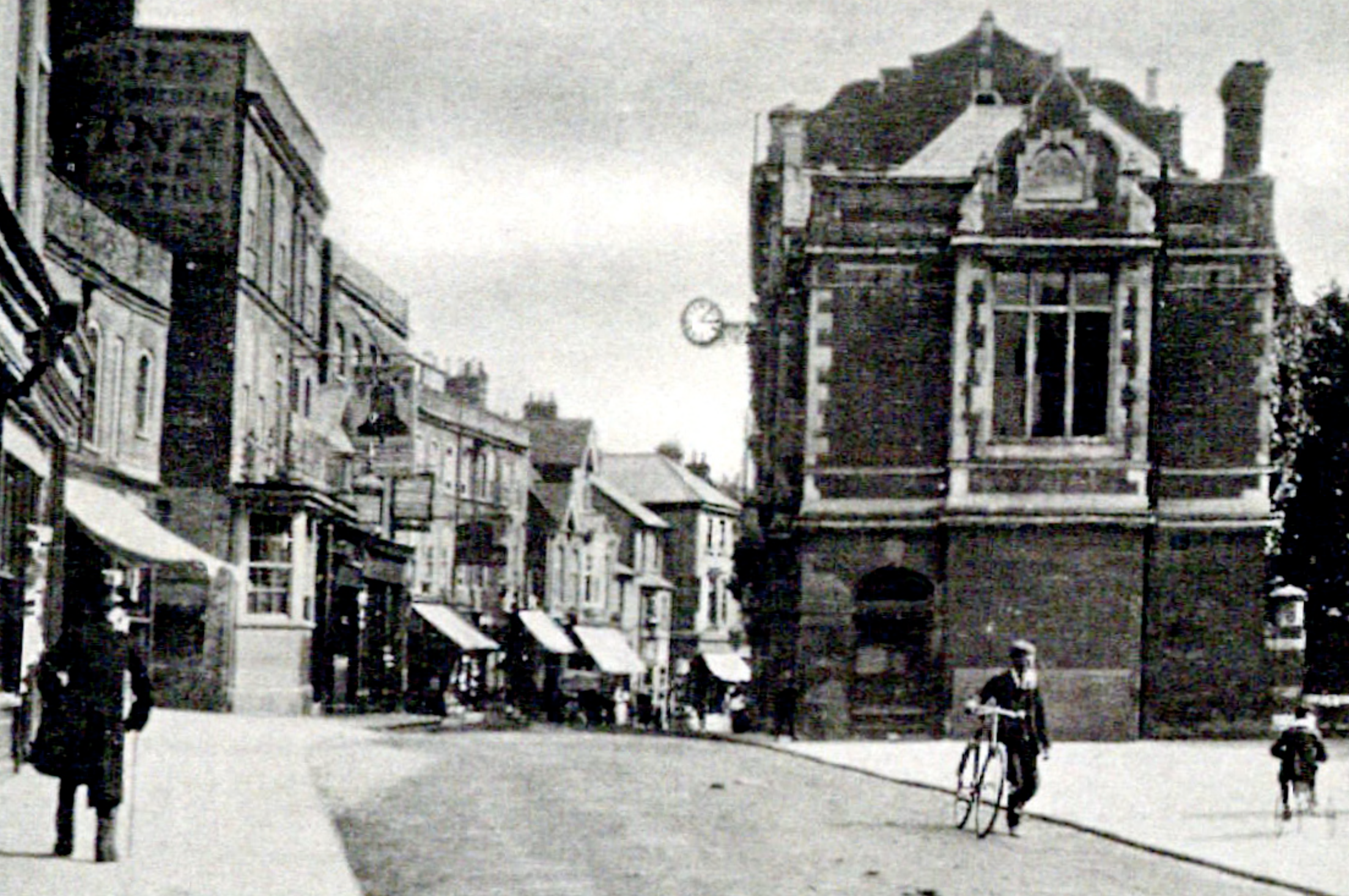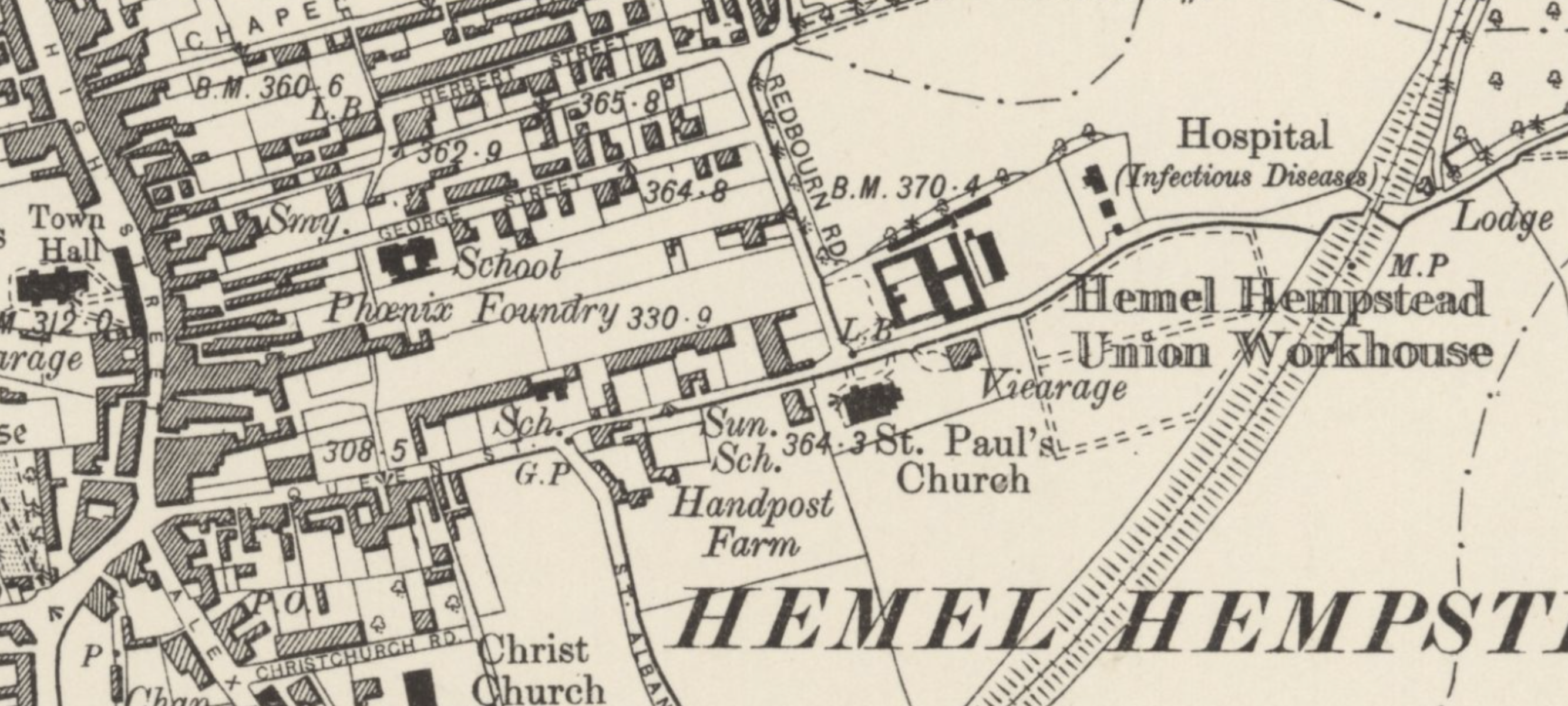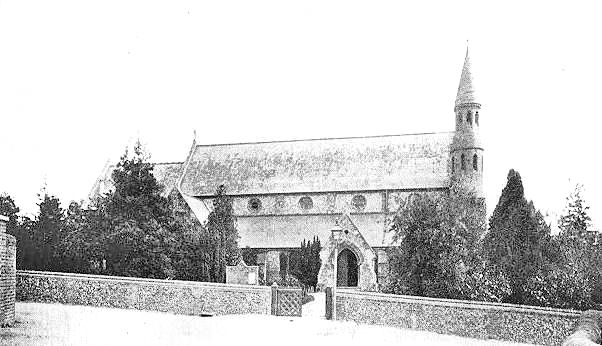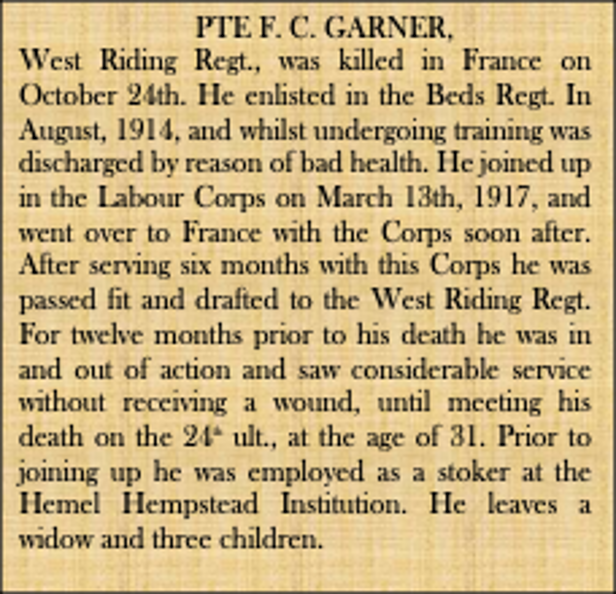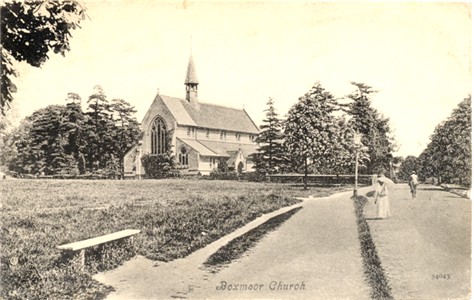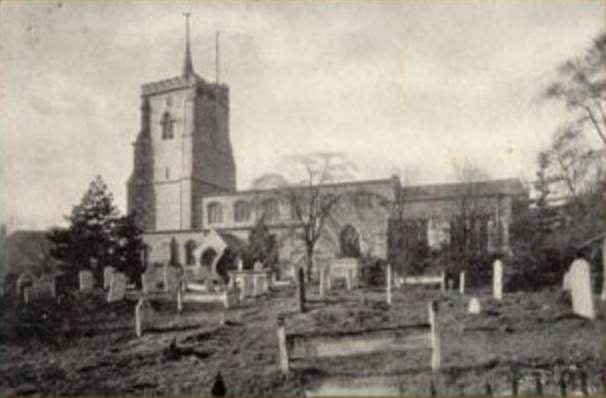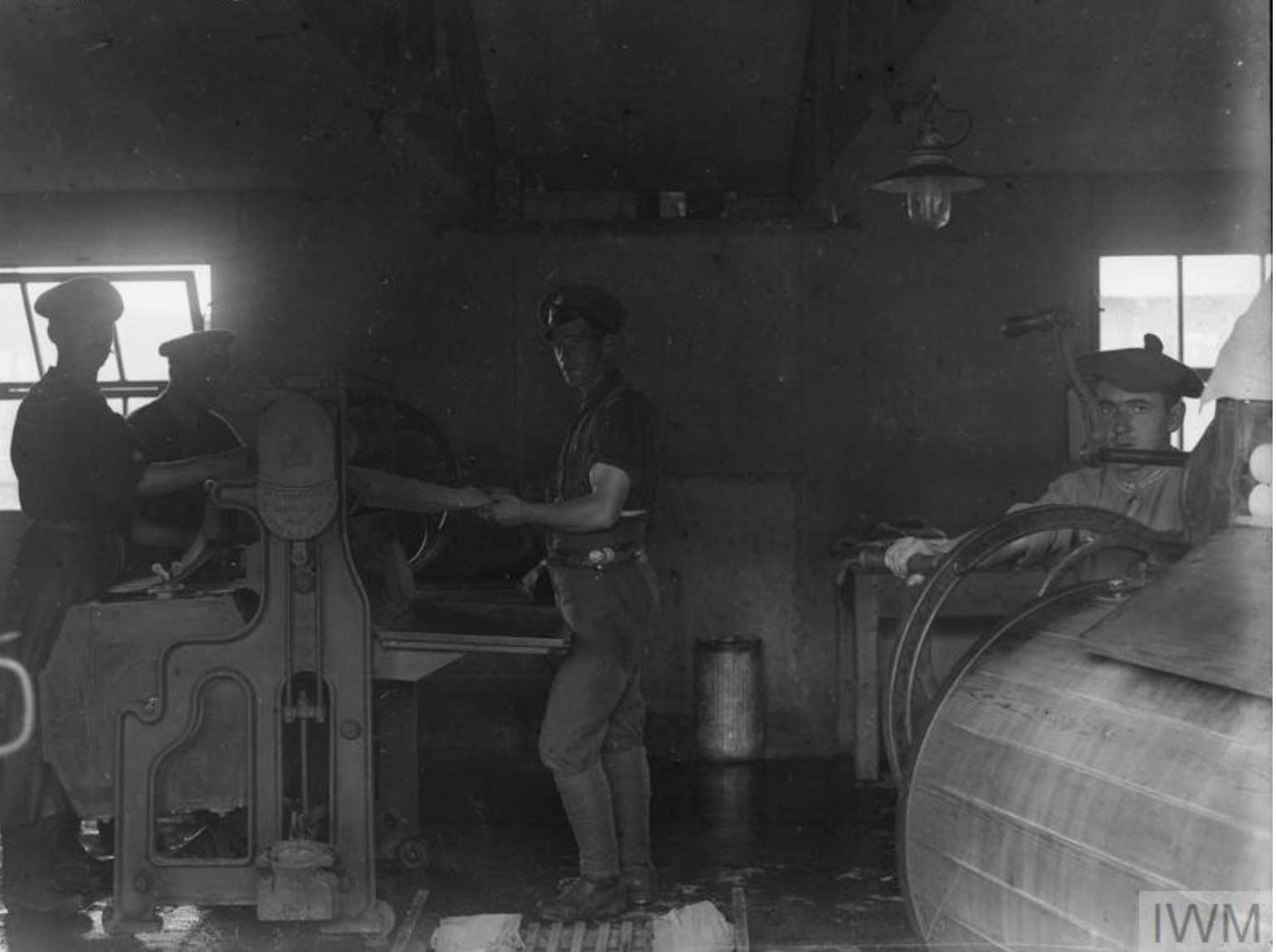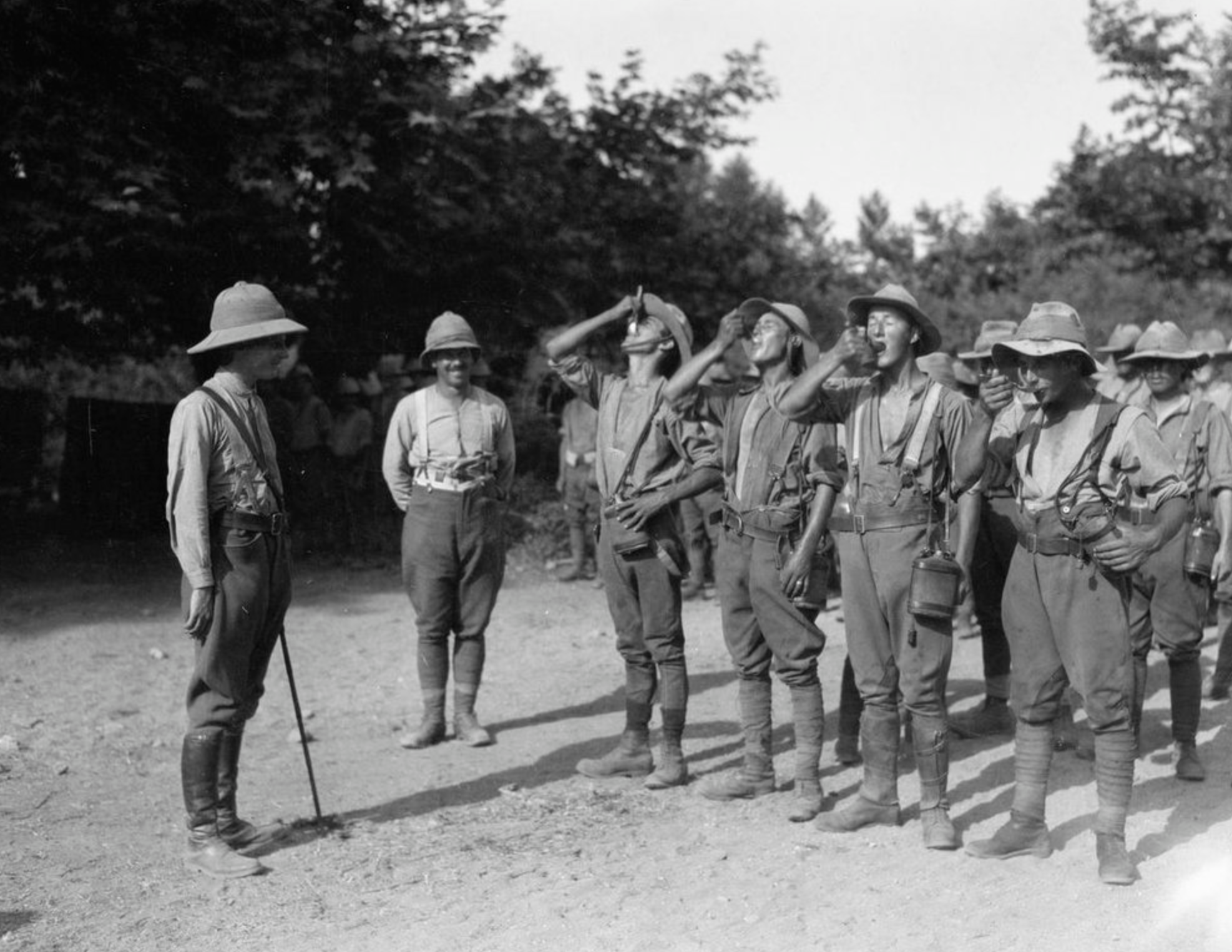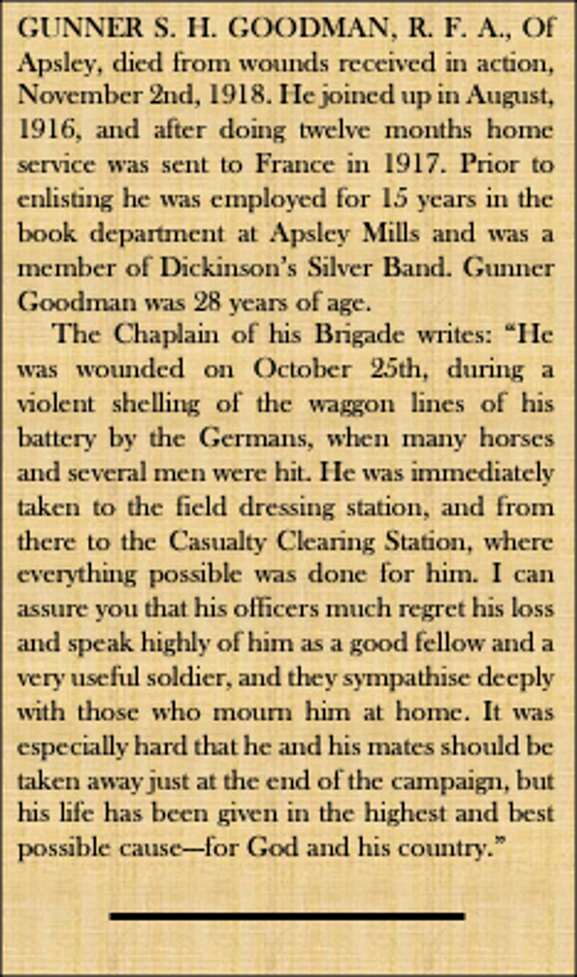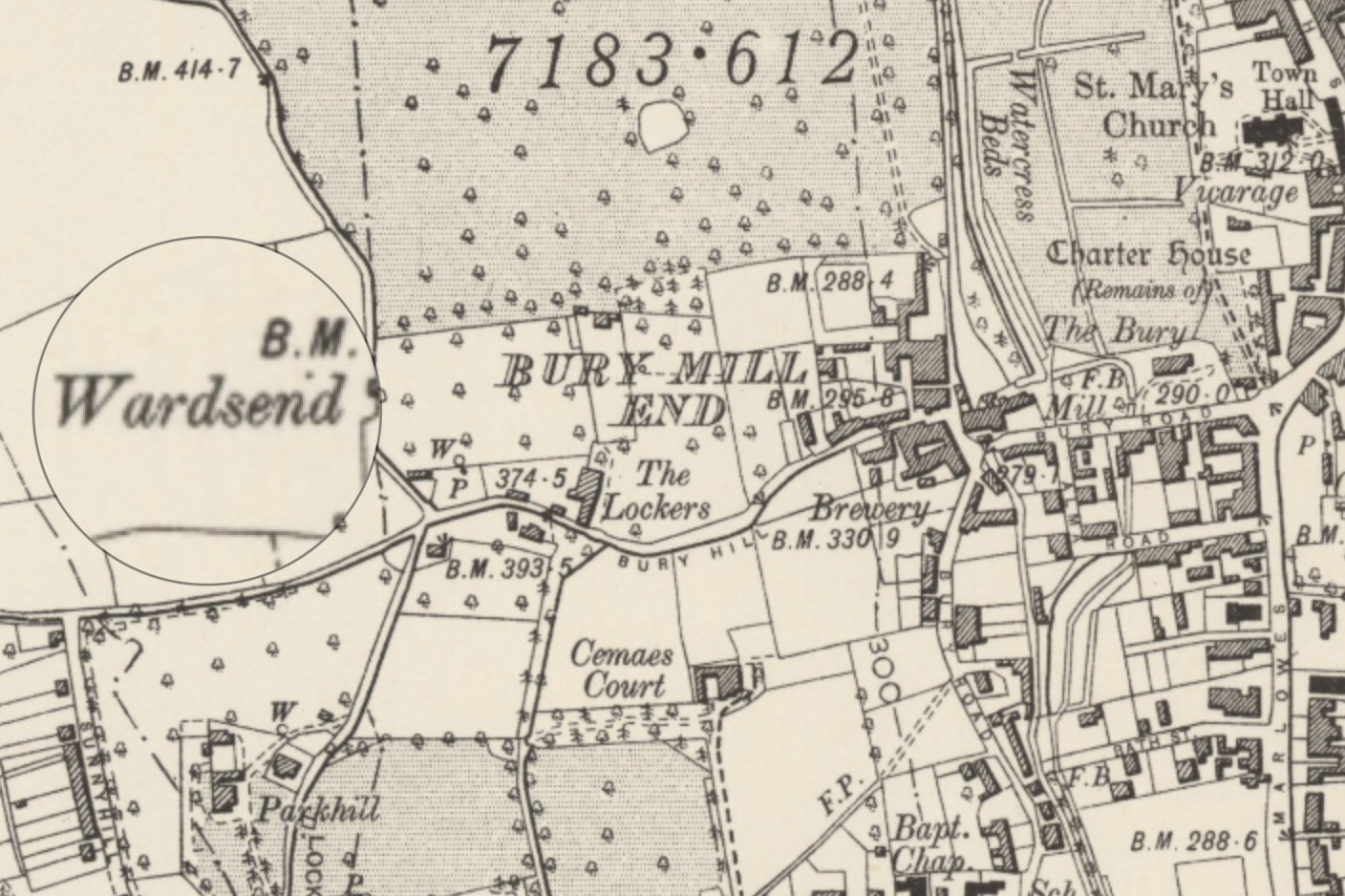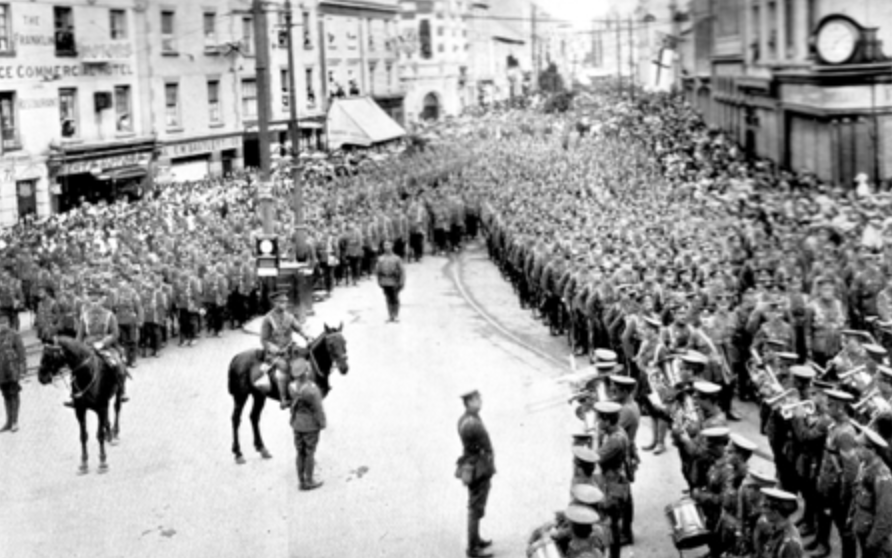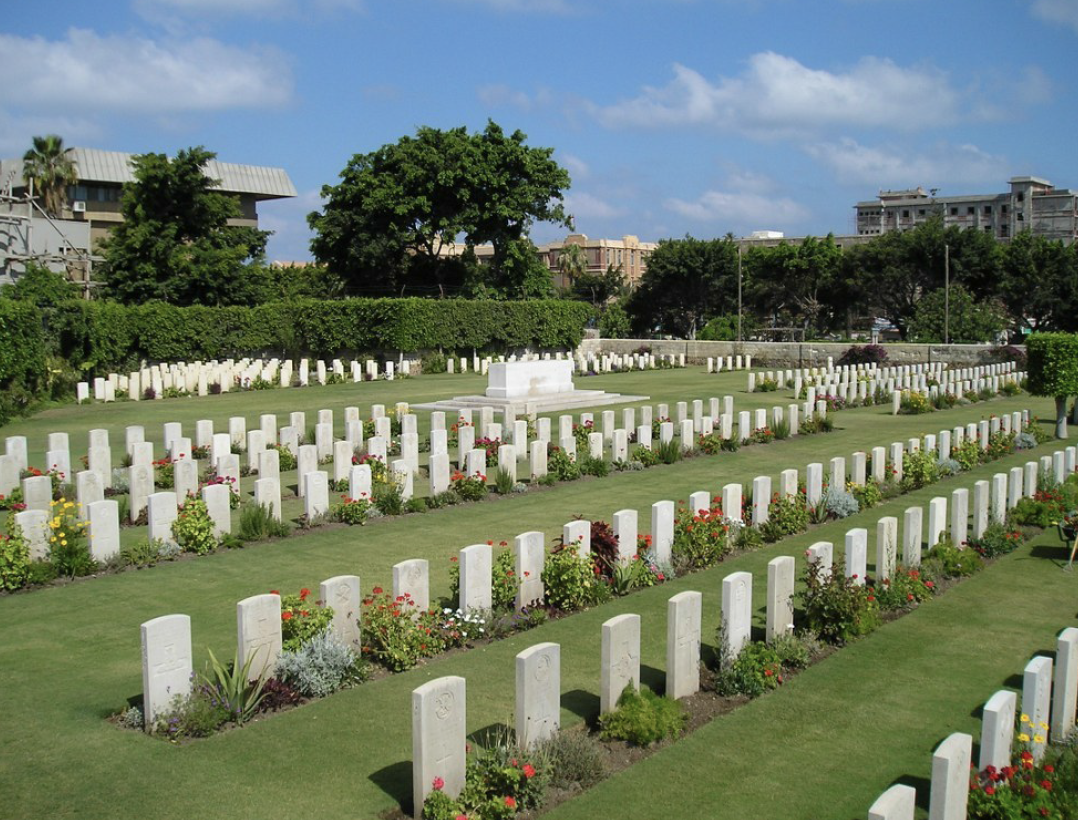Fallen in October 1918:
Oliver James Belson
William Windmill
Frederick Alfred Clark
Fred Harrowell
Charles Henry Potts
Albert Thomas Smith
Alfred Raymond Baines
Charles John Hitchcock
George Henry Harris
Arthur Joseph Kitchener
Charles Golding
Edwin Thorn MM and Bar
Frederick Charles Garner
Walter Lea
Sydney Herbert Goodman
William Daniel Ratcliffe
OLIVER JAMES BELSON
33944 Private
6th Bn., York and Lancaster Regiment
Killed in Action Tuesday 1st October 1918
Remembered with Honour, Sucrerie Cemetery, Epinoy, Pas de Calais, France, Grave D. 20.
Oliver James Belson was born in Hemel Hempstead in 1898 the oldest child of Oliver James Belson snr. and Ada Howard. Oliver and Ada had five children together who were Oliver James, Ada, Alfred, Elsie and Daisy. Ada jnr. died in 1902 when aged just two.
Oliver snr. was a “Baker” and the family lived in the Two Waters area of Boxmoor in 1901 and by the time of the 1911 Census they had moved to “The Parade” in nearby Apsley End. Oliver’s Grandfather James was a “Marine Store Dealer” supplying goods to the many “Bargees” plying their trade on the Grand Junction (Union) Canal which ran through Apsley and Boxmoor.
When Oliver had finished his education he joined his Grandfather in the business and he is recorded as a “Marine Store Dealer’s Assistant” on his attestation papers when he enlisted in Bedford on the 20th February 1917. Oliver was slightly built and weighed only eight stones, despite being slightly taller than the average man at “5 feet 6 inches”, and his medical records on enlistment recorded that his chest measurements were “2 inches” under permitted size. This was not enough however, to result in rejection and he was categorised “A” and passed fit for military service.
He was posted to the 26th and then the 28th Training Reserve Battalions for basic training and on the 7th March he was transferred to the 245th Infantry Battalion. Oliver completed his training just over seven months later and was then sent overseas on the 24th September 1917 to a BEF Base Depot. He was posted to the 10th Battalion York and Lancaster Regiment six days later.
He saw significant action in 1917 and fought through the whole of the Third Battle of Ypres which included actions at Pilckem Ridge, Menin Road Ridge, Polygon Wood, Broodseinde, Poelcapelle and finally at the horrendous and costly First Battle of Passchendaele on the 12th October. Oliver came through unscathed despite significant casualties suffered by both sides and 13,000 Allied casualties at Passchendaele alone.
The 10th Battalion was disbanded in February 1918 and Oliver and his comrades transferred to the 6th Battalion York and Lancaster Regiment on the 6th February 1918 and assigned to “A” Company. On the 6th May 1918 he was injured as a result of an accident whilst on a working party. He was reported to have accidentally slipped off the duckboards owing to the “intense darkness” and cut his hand.
He was hospitalised for treatment and when he had recovered sufficiently he returned to his battalion in early June. Two months later in late August and early September he fought in the successful Second Battle of Arras in the actions at the Scarpe and the breakthrough at the German Drocourt-Queant Line.
He was awarded leave in mid-September and returned to Hemel to see his family and friends before returning to France on the 24th of the month. Just three days after returning Percy fought in the Battle of the Canal du Nord which was part of what became known as the “Hundred Days Offensive” which led directly to the Allied victory and Armistice in November 1918.
At 5.20 a.m. on the morning of the 27th September, the Allied forces attacked under cover of total darkness, taking the Germans by complete surprise. By mid-morning all the defenders had retreated or been captured, and the Allies pushed home the advantage and advanced towards Cambrai. The action continued for the next three days concluding on the 1st October when the Battalion returned to billets.
Oliver was posted “Missing” and his death, as the battle concluded, was subsequently confirmed. He was Killed in Action on Tuesday, 1st October 1918.
He is Remembered with Honour in Sucrerie Cemetery, Epinoy, Pas de Calais, France, where he is interred in Grave D. 20. The inscription on his headstone, requested by his mother Ada, reads: “FAITHFUL UNTO DEATH”.
Oliver was only 20 years old when he died.
He was entitled to the British War Medal and the Allied Victory Medal.
"Two Waters", where Oliver was born (Photo: Public Domain)
The "Parade" Apsley where Oliver's father had his Bakery (Photo: Public Domain)
Crossing the Canal du Nord where Oliver fell in 1918 (Photo: https://www.akg-images.co.uk)
Sucrerie Cemetery, Epinoy, Pas de Calais, France (Photo: CWGC)
WILLIAM WINDMILL
170933 Gunner
72nd Bde., Royal Field Artillery
Died of Wounds Tuesday 1st October 1918
Remembered with Honour, Sunken Road Cemetery, Boisleux-St. Marc, Pas de Calais, France, Grave III. B. 17.
William Windmill was born in St. Albans, Hertfordshire in late spring 1895 and baptised at Christchurch, St. Albans, on Sunday, 13th October in the same year. He was the second child and only son of William Windmill and Sarah Pointer who had two children, Hannah and William. William’s cousin Edith Pointer also lived with them and it appears she was raised by her Uncle and Aunt.
The Windmill family were recorded living on Portland Street, St. Albans in 1901 and William Snr. was working as a “Plasterer”. In 1911 when the younger William was fifteen years old, he is recorded working as a “Plasterer’s Apprentice”, presumably for his father, and the family now lived at 14 Mount Pleasant, just around the corner from their previous home.
William volunteered in October 1914, shortly after the outbreak of war and he attested at Hertford and enlisted with the Royal Field Artillery (RFA). He was posted for training with the 72nd Brigade, a “Howitser” unit, and sent to Larkhill in Wiltshire to the RFA Training School.
There was a saying which soon developed during the Great War that “It took three months to train an infantryman, but twelve months to train a gunner” and it seems this was the case for William. Despite his early enlistment, like most other “Gunners” he spent over a year training to handle, move and fire the 4.5-inch Howitzers used by the RFA.
It is not known exactly when he went to France, but it was not before the end of 1915. The first four-gun batteries of the 72nd Brigade had gone to France in July 1915 and it seems William followed six months later. He returned to St. Albans on home leave in the spring of 1916 to marry his sweetheart, Gertrude Elizabeth Huckle. Gertrude, originally form Great Hornmead, Hertfordshire, had been living and working in Leverstock Green for a number of years when she and William met.
They were married in in St. Albans and after only a few days together, William returned to his Unit in France. In July he fought in the Battle of the Somme, which included the Battle of Pozières, the Battle of Flers-Courcelette.
In 1917 his Brigade transferred to the 15th Scottish Division and he then fought in the Arras Offensive before moving to Belgium where he was in action at Pilckem Ridge and Langemark, phases of the Third Battle of Ypres in October and November.
1918 followed a similar pattern of action and in August and September William fought in the Second Battles of the Somme at Amiens, Albert, Bapaume and finally Mont St. Quentin. In late September, in action near Contalmaison, William finally ran out of luck.
The circumstances of his death are not known in detail, but he was wounded at some point at the Front and despite being taken out of the line for treatment, he sadly succumbed to his wounds.
He died on Tuesday, 1st October 1918.
William had served for four years when he fell and had been at the front in action for almost three of these. The tragedy for him was how close the Allies where to victory and the Armistice which arrived only forty-two days after his death.
Despite never having lived or worked in Hemel Hempstead, his widow Gertrude, who returned to live in Leverstock Green after their marriage, ensured he was properly commemorated on the town War Memorial. Gertrude married for a second time in 1920 in Frimley, Surrey, to a widower and serving member of the RFA, James Garner, with whom she went on to have three children. She died in July 1970 at the age of eighty.
William is Remembered with Honour in Sunken Road Cemetery, Boisleux-St. Marc, Pas de Calais, France, where he is interred in Grave III. B. 17.
He was 23 years old when he died.
William was entitled to the British War Medal and the Allied Victory Medal.
Christ Church, St. Albans where William was baptised (Photo: Public Domain)
Larkhill Training School, Salisbury Plain (Photo: Public Domain)
4.5 inch Howizters in the field 1917 (Photo: Public Domain)
Contalmaison where William fell (Photo: https://www.ww1cemeteries.com)
Gnr. Windmill’s grave, Sunken Road Cemetery, Boisleux-St. Marc, Pas de Calais, France (Photo: Traquair Photography)
FREDERICK ALFRED CLARKE
56818 Private
18th Bn., Lancashire Fusiliers
Died of Wounds Wednesday 3rd October 1918
Remembered with Honour, Tyne Cot Memorial, West-Vlaanderen, Belgium, Panel 54 to 60
Frederick Alfred Clarke was born on Tuesday, 7th March 1899 in Hemel Hempstead, Hertfordshire and baptised on Friday, 14th February 1902, along with his younger sister Ruth at St. Mary’s Church on the High Street in the town. He was the second son and Charlie (Charles) Clarke and Rose Hall Gertrude May, Charles William, Rose, Ellen, Louisa Catherine, Frederick, Cissie, Florence Eva, Sarah, Mabel Ruth died in 1905 aged three, Sarah and Mabel both died as infants before 1911 and Rose died in 1916 aged twenty-one.
Frederick’s father Charlie was a “Master Painter”, and the large family lived a No. 9 Piccotts End near Hemel Hempstead for many years until moving to live at 6, Bury Hill in the town. Frederick left school in 1913 but it is not known where he went to work prior to the outbreak of war and until the time he enlisted for service.
He attested at Watford in July 1917 when he had reached the age of eighteen and enlisted in the Army. He was first posted to the Training Reserve and on completion of his basic training he was sent overseas to a Base Depot and to await posting.
The exact date of his arrival in France is not known but it was probably around March 1918 when he had reached his nineteenth birthday. His subsequent posting sent him to the 18th Battalion Lancashire Fusiliers, and he joined the unit to the east of Albert.
He was soon in the trenches and during the next three months the 18th Lancashires had regular tours on the frontline. In July the Battalion moved to St Elooi south of Ypres as the Allies prepared for an offensive which culminated in the Fifth Battle of Ypres or the Advance of Flanders.
For most of July, Frederick and his comrades were in support, reserve or in the line and casualties were beginning to mount. There were also regular nighttime raiding parties which were seen as necessary although hugely unpopular amongst the soldiers due to the extreme dangers. These were not least due to “friendly fire” as there were often reports of covering barrages falling short and even landing on the attacking raiding party.
August brought some respite and was altogether quieter with training and resting the order of the day, but this was all to change as preparations began in September for a major Allied assault. The Battalion moved to new positions between Poperinghe and Ypres and Frederick found himself at the notorious “Hill 60” awaiting orders to go into battle.
At 5.30 a.m. on the 30th September, the 18th Lancashires went into action in the Fifth Battle of Ypres. Objectives were achieved at relatively low cost initially and over 250 Germans were taken prisoner along with a significant assortment of armaments. The action concluded on the 2nd October but only after two days of more difficult fighting and in all the Battalion suffered 318 casualties. Sadly Frederick was one of these.
He was on the last day of the battle and he succumbed to his injuries the following day. He died on Wednesday, 3rd October 1918.
Frederick was commemorated on the War Memorial Plaque in St. Mary’s Church on the High Street in Hemel Hempstead where he had been baptised and worshipped.
He is Remembered with Honour on Tyne Cot Memorial, West-Vlaanderen, Belgium, Panel 54 to 60.
He was only 18 years old when he died.
Frederick was entitled to the British War Medal and the Allied Victory Medal.
St. Mary's Church Hemel Hempstead where Frederick was baptised (Photo: http://www.hertfordshire-genealogy.co.uk)
Piccotts End where Frederick was born and spent his early years (Photo: http://www.hertfordshire-genealogy.co.uk)
A Training Reserve Battalion at St. Albans (Photo: http://www.hertfordshire-genealogy.co.uk)
St. Mary's Church War Memorial Plaque (Photo: Traquair Photography)
Tyne Cot Memorial, West-Vlaanderen, Belgium (Photo: CWGC)
FREDERICK HARROWELL
105849 Private
1/1st Hertfordshire Yeomanry
Died of Illness Wednesday 3rd October 1918
Remembered with Honour, Ramleh War Cemetery, Israel and Palestine (including Gaza), Grave CC. 16.
Frederick Harrowell, known as Fred, was born in Leverstock Green near Hemel Hempstead on Thursday, 12th April 1894 and baptised in Holy Trinity Church in the village the following month on Sunday, 13th May. He was the oldest child of Alfred Harrowell and Lizzie (Elizabeth) Alice Gill who went on to have three other children, Emily Beatrice, James and Leonard.
The Harrowell family lived at 2, Church Row in Leverstock Green and Fred’s father Alfred worked as a “Labourer” at the nearby “Acorn” brickworks where he would eventually become foreman, a position that Lizzie’s father had held before his death.
Fred attended the local village school and was also a keen Scout in the village troop. When he completed his education in 1908 he went to work for John Dickinson & Co., Limited in Apsley Mills where he remained until going to war.
He volunteered in late September 1915 when he attested at Marlowes Recruiting Office in Hemel Hempstead and enlisted with the Hertfordshire Yeomanry, a unit of the Household Cavalry and Cavalry of the Line. He was posted to Maresfield, East Sussex to the 3/1st Herts Yeomanry which had been formed earlier that year as a third-line training unit.
The 3/1st was attached to the 13th Reserve Cavalry Regiment and it was at Maresfield that Fred underwent instruction as a trooper and was trained in “horse warfare”. When he completed his training Frederick was sent overseas posted to the 1/1st Herts Yeomanry serving in Egypt and recently restricted into four squadrons.
It is unclear which Squadron Fred joined but it seems his whole period of service was either in Egypt, Palestine or Mesopotamia where the 1/1st Herts Yeomanry, with the exception of a period when “B” Squadron fought on the Western Front, served throughout the War.
The area that Fred was fighting in was a high malarial zone and indeed, malaria was an unanticipated adversary in the Great War to all combatants. There were number of epidemics across the various battle zones including the south of England and these were all caused by ineffective prevention measures and the frequent movement of large numbers of men between countries and zones.
In September 1918 the Allies under General Allenby, began the final advance against the Turks and this took them deep into the notorious Jordan Valley. During the advance men began to contract and die as a result of malaria and this reached epidemic proportions by mid-October by which time 773 men had succumbed and over 30,000 had to be admitted to hospital. A generally held view is that had the Turks been able to hold out for a further two weeks, the Allied victory might not have been achieved.
Fred was one of the unfortunate soldiers who had contracted malaria and quickly died in the early stages of the advance.
He succumbed on Wednesday, 3rd October 1918.
Fred was included in the commemorative service in Holy Trinity Church, Leverstock Green at Easter in 1919, and was also named on the village school memorial. He is commemorated on the Leverstock Green village War Memorial and on the Hertfordshire Yeomanry memorial in St Albans Cathedral. He was also commemorated on the John Dickinson & Co., Limited War Memorial at Apsley End and finally, he is on the headstone of his parent’s grave in Holy Trinity Churchyard.
Of the soldiers commemorated on the Leverstock Green village War Memorial Fred was born closest to it but is buried furthest from it.
He is Remembered with Honour in Ramleh War Cemetery, Israel and Palestine (including Gaza) where he is interred in Grave CC. 16.
He was 24 years old when he died.
Fred was entitled to the British War Medal and the Allied Victory Medal.
Pte. Fred Harrowell (Photo: P. R. Green https://sites.google.com/site/leverstockgreenwarmemorial/frederick-harrowell)
Church Row, Leverstock Green where Fred was born (Photo: P.R. Green :https://sites.google.com/site/leverstockgreenwarmemorial/frederick-harrowell)
Fred as a Scout (Photo: P.R. Green :https://sites.google.com/site/leverstockgreenwarmemorial/frederick-harrowell)
Ramleh War Cemetery, Israel and Palestine (including Gaza) (Photo: CWGC)
CHARLES HENRY POTTS
22561 Private
4th Bn., Bedfordshire Regiment
Died of Wounds Wednesday 3rd October 1918
Remembered with Honour, St. Sever Cemetery Extension, Rouen, Seine-Maritime, France, Grave R. III. C. 2.
Charles Henry Potts was born at the beginning of 1897 in Great Gaddesden, Hertfordshire and baptised later that year on 4th July at St. John the Baptist Church in the village. He was the only child born to Harry Potts and Annie Mitchell.
By 1901, Charles’ family had moved to Piccotts End just outside Hemel Hempstead where his father worked as a “Builder’s Carter”. His aunt, Lizzie Mitchell, was also living with the family at this time. At the next census in 1911, Henry had moved the family to Hemel Hempstead, and they were living at 15, Herbert Street behind the High Street. His sixteen-year-old cousin Edith Potts was living with the family and they also had a “Boarder” Alice Maud Batchelor. Charles’ mother Annie, along with Edith and Alice were working with Dickinsons in Apsley Mills and his father was recorded as a “Builder’s Labourer”.
Charles was still at school in 1911, although aged fourteen he could have left the previous year, and it is not known where he went to work when his education was complete. He was still too young to enlist on the outbreak of war, but when he had reached the age of eighteen he volunteered in October 1915.
He travelled to Luton to attest and enlisted with the Machine Gun Corps (MGC). He would have been sent to Grantham to the Machine Gun Training Centre to learn the specialist skills required to handle either the heavy Vickers gun or the lighter Lewis gun.
Training at Belton Park in Grantham took a minimum of five weeks and often much longer as the men of the MGC were taught the mathematics of the machine gun, firing, map reading and the use of semaphore flags. This was in addition to the normal basic training undertaken by new recruits to get them fit and prepare them for battle conditions. More than 100,000 men passed through the camp and Charles was among them.
It is not known when Charles went to France, but it was probably around July 1917 after completion of his training and when he had reached the age of nineteen, so old enough to serve overseas. What does seem likely however, is that he was posted to the 190th Company MGC which was part of the newly formed 190th Brigade under the orders of the 63rd (Royal Naval) Division which included the 4th Battalion Bedfordshire Regiment and in which Charles would ultimately serve.
It is not clear when or why he transferred to the 4th Bedfords but it may have been in March 1918 when the 190th Coy. MGC moved to the 63rd Battalion MGC or he may have been wounded at some point and transferred to the Bedfords on his return.
It is worth noting that the 63rd (Royal Naval) Division was extremely well led from the top down, and the units within being very highly motivated and displaying a tremendously stubborn streak when events transpired against them. As a result, by the Armistice in November 1918, the Division had suffered almost 48,000 casualties, but had earned themselves a reputation as one of the British Army's top divisions, with some arguing that they were the best. Although the Division itself was disbanded and would never be reformed again, today's Royal Marine Commandoes have kept its “elite” status very much alive.
Charles time in France saw him go through some of the hardest fighting for over two years including the Battle of Ancre at the end of 1916 and the Arras Offensive in the first half of 1917. This was followed by the horrendous engagements in the Third Battle of Ypres towards the end of the year and this of course included the catastrophic Battle of Passchendaele in October and November.
1918 brought little respite and he was in action at the First and Second Battles of the Somme and his war culminated in the Battle of the Canal du Nord on 27th September when he was one of sixty-one men wounded. He was taken out of the line and despite being taken to a Base Hospital in Rouen he sadly succumbed to his injuries a week later.
Charles died of his wounds on Wednesday, 3rd October 1918.
He was commemorated on the War Memorial Plaque in St. Mary’s Church, High Street, Hemel Hempstead and on the War Memorial Scroll in St. Paul’s Church in Highfield in the town.
Charles is Remembered with Honour in St. Sever Cemetery Extension, Rouen, Seine-Maritime, France, where he is interred in Grave R. III. C. 2.
He was only 21 years old when he died.
Charles was entitled to the British War Medal and the Allied Victory Medal.
Great Gaddesden where Charles was born (Photo: http://www.hertfordshire-genealogy.co.uk)
St. John the Baptist Church, Great Gaddesden where Charles was baptised (Photo: http://www.hertfordshire-genealogy.co.uk)
Belton Park, Grantham the MGC training camp (Photo: https://transportsofdelight.smugmug.com)
Trenches at Canal du Nord where Charles fell (Photo: https://weaponsandwarfare.com)
St. Mary's Church War Memorial Plaque (Photo: Traquair Photography)
St. Sever Cemetery Extension, Rouen, Seine-Maritime, France (Photo: CWGC)
ALBERT THOMAS SMITH
96578 Private
1st Gun Carrier Coy., Tank Corps
Died of Wounds Thursday 4th October 1918
Remembered with Honour, Terlincthun British Cemetery, Wimille, Pas de Calais, France, Grave IV. E. 21.
Albert Thomas Smith was born in Berkhamsted, Hertfordshire in March 1899 and baptised the following month at St. Peter’s Church in the town on 23rd April. Albert was the fifteenth child of Charles Smith and Sarah Katharine Barber who had a very large family of eighteen children together. These were Joseph, George, Herbert Charles, Clara Annie, Sarah, Joseph Charles, James, Edith Annie, Francis Henry, Florence Annie, Arthur, Emily Elizabeth, Mary, Violet Ethel, Albert Thomas, Ernest John, Sarah Caroline and Nancy.
Sadly however, five of the children had died before Albert was born, the first Joseph in 1882 when he was aged two, Clara and the first Sarah in 1886 aged two and one respectively, James in 1889 when he was two and the Arthur in 1896 aged three. Francis then died in 1904 when he was fourteen and then the second Joseph died in 1915.
He, like his younger brother Albert fell in the Great War, killed in action on Sunday, 25th July 1915 whilst serving with the 2nd Battalion Bedfordshire Regiment.
On the outbreak of war, Albert was still too young at fifteen to volunteer, but as soon as he had reached his eighteenth birthday in March 1916, he travelled to Watford to enlist and joined the Royal Tank Corps.
The Tank Corps had been formed in March 1916 as the Heavy Section of the Machine Gun Corps and the first tanks sent to France in August. They were first deployed in the Battle of Flers-Courcelette on the 15th September 1916, surprising the Germans and the British troops alike. As they were further developed what became the “Tanks Corps” was officially formed on 27th July 1917.
By this time, Albert was at Bovington in Dorset undergo his basic training and he was sent overseas in March 1918, just after his nineteenth birthday. He was posted to the 1st Gun Carrier Company, Royal Tank Corps arriving with the unit on the 15th April.
The Gun Carrier Companies by this time were being used to supply the Tank Battalions with materials such as petrol, grease, oil, machine guns and parts as well as moving troops when required. Much of Albert’s time was spent in training and maintaining the Tanks until late May when he was at the frontline on supply duties.
Part of his duties also involved “Salvage” when damaged or abandoned tanks were scavenged for parts to help maintain the operation of the other tanks. This was dangerous work and often on or near the frontlines and casualties where frequent.
On 27th June 1918, Albert was injured whilst engaged in this work and admitted to hospital where he remained until returning to his unit on the 19th July to resume duties. On the 27th September, an entry in the Unit War Diaries recorded the event which led directly to Albert’s death as follows: “Three tanks returned…to await loading. Loaded at 2.0pm and proceeded at 6.30pm…arrived almost midnight. Encountered considerable harassing firing of gas and H.E. [High Explosives]. G.C. Tank 105 received 2 direct hits, abandoned. 5 O.R. gassed admitted hospital.”
Number 105 was Albert’s tank and despite treatment in hospital and hanging on for eight days he eventually succumbed to “gas poisoning”.
He died of his wounds on Thursday, 4th October 1918.
A brief report about his death appeared in the Hemel Gazette the following week. (see extract)
He was commemorated on the War Memorial Plaque in St. Mary’s Church, High Street and on the War Memorial Scroll in St. Paul’s Church, Highfield in Hemel Hempstead.
Albert is Remembered with Honour in Terlincthun British Cemetery, Wimille, Pas de Calais, France, where he is interred in Grave IV. E. 21.
He was only 19 years old when he died.
Albert was entitled to the British War Medal and the Allied Victory Medal.
St. Peter's Church, Berkhamsted where Albert was baptised (Photo: http://www.hertfordshire-genealogy.co.uk)
Bovington Tank Training Camp, Dorset (Photo: https://tank100.com)
Damaged tanks were often salvaged for parts (Photo: Public Domain)
Extract from The Hertfordshire, Hemel Hempstead Gazette and West Herts Advertiser 9th November 1918
Terlincthun British Cemetery, Wimille, Pas de Calais, France (Photo: CWGC)
ALFRED RAYMOND BAINES
40983 Private
7th Bn., Northamptonshire Regiment
Killed in Action Thursday 9th October 1918
Remembered with Honour, Cagnoncles Communal Cemetery, Nord, France, Grave 4.
Alfred Raymond Baines was born in Hemel Hempstead on Wednesday, 9th August 1899 the second child of Alfred Baines and Kate Margrave. He had six siblings who were: Dorothy, William Stanley, Victor Leslie Berridge, Harry Ronald and Doris Kathleen. His oldest sister Dorothy died in infancy in 1897 and his youngest brother Harry died in 1904 when he was only a year old.
His oldest brother William also served in the Great War and he survived the conflict.
The Baines family lived in the Roughdown area of Boxmoor when Alfred was born and his father Alfred worked at Fosters Saw Mills in Kingsland Road as a ‘Wood Moulding Machinist’.
Alfred started his education in 1906 when he entered Two Waters ‘British School’ which was situated just off the London Road in the Two Waters area of Boxmoor. Alfred was at the school until 1912 when he left aged. One of his classmates was Albert ‘Bert’ Charge who also died in the Great War six months before Alfred. His biography also appears in this book.
Alfred (left), William and Victor Baines in 1916
As can be seen in the picture above, The Baines boys were active members of the nascent scouting movement and Alfred earned a number of badges as well as being one of the Boxmoor Troop ‘Buglers’.
When Alfred started work he joined Fosters Saw Mills where his father worked, and Alfred trained as a ‘Clerk’, a job he would do until he went to war.
On the outbreak of war Alfred was too young to enlist and he saw his brother William go off to fight in 1916 whilst he had to wait another year before he could join the Colours. He attested in Watford a month after his eighteenth birthday on 3rd September 1917 and joined the Bedfordshire Regiment. He went to train in Felixstowe before being sent to France the following year.
When he was posted it seems he went to the Northamptonshire Regiment and he disembarked at Le Havre on the 1st April 1918 and joined his regiment ten days later at Escarbotin about 12 miles west of Abbeville in the Bay of the Somme. He was assigned to ‘D’ Company 7th Battalion Northamptonshires.
For the next month Alfred trained with his comrades before his unit moved up to the frontline to relieve the 4th Canadian Mounted Rifles in Hill 70 Sector at Les Brebis on the 2nd May. During the next month the Battalion carried out reliefs but the enemy was relatively quiet until towards the end of May when it began to send over gas shells.
On the 1st June the Battalion War Diary recorded the following: "Enemy artillery slightly active during day. 3 O.R.s reported suffering from gas." Alfred was one of the unfortunate men ‘gassed’ and was taken down the line to hospital for treatment.
He returned to his Company around the 9th September 1918 and was back in the trenches on the frontline almost immediately. By early October Alfred was with his unit near the village of Cagnoncles approximately 1½ miles to the east of Cambrai. On morning of the 9th, ‘D’ Company were in action and the War Diary recorded the following: "Having taken the high ground on his sector, Capt. Pearson [M.C.] went personally with a strong patrol to reconnoitre the village, and failed to return". In fact, none of the patrol returned and all the men who went were confirmed ‘Killed’.
Young Alfred was one on the unfortunate patrol members and he was ‘Killed in Action’ on Wednesday, 9th October 1918. He fell just 33 days before the Great War ended and was amongst the last of the Hemel Hempstead soldiers to die in the conflict.
The Baines family were members of the congregation at Boxmoor Baptist Chapel and Alfred was commemorated on a memorial plaque in the church. The plaque was subsequently removed when the church was demolished and can now be seen in Carey Baptist Church on Marlowes, Hemel Hempstead.
Boxmoor Baptist Chapel Memorial Plaque (now in Carey Baptist Church) (Photo: ©Kathleen McLeod 1st Apr. 2018)
Alfred is Remembered with Honour Cagnoncles Communal Cemetery, Nord, France where he is interred in Grave 4. The inscription on his headstone, requested by his mother Kate reads: “OUR LOSS, HIS GAIN”
He was only 19 years old when he died.
Alfred was entitled to the British War Medal and the Allied Victory Medal.
The Baines family in 1907 (Photos: Graham Baines)
Two Waters "British" School around 1910, the Baines boys may be in this picture (Photo: Peter Trustram)
Boxmoor Baptist Church, Russell Place, Boxmoor where the Baines family worshipped (Photo: http://www.hertfordshire-genealogy.co.uk)
Boxmoor Baptist Chapel Memorial Plaque (now in Carey Baptist Church) (Photo: ©Kathleen McLeod 1st Apr. 2018)
Cagnoncles Communal Cemetery, Nord, France (Photo: CWGC)
CHARLES JOHN HITCHCOCK
369634 Sapper
"J" Depot Coy., Royal Engineers
Drowned at Sea, Thursday, 10th October 1918
Remembered with Honour, Kirkcudbright (St. Cuthbert) Old Churchyard, Kirkcudbrightshire, Scotland, Special Plot 4
Charles John Hitchcock was born in Hemel Hempstead, Hertfordshire in December 1888 and baptised on Sunday, 31st March 1889 in St Paul’s Church on Queen Street in the town. He was the oldest son of Charles John Hitchcock and Annie Lane who had a large family of ten children who were, Lily, Charles John, Ann, Rose, Frederick William, Stanley, Sidney Thomas, Winifred Daisy, Herbert Reginald and Nellie.
Stanley died when he was just a year old in 1899 whilst Charles’ brother Frederick also died in the Great War, aged twenty-five, and tragically his death came fourteen days after the Armistice was signed. Frederick’s biography is also in this book.
When Charles was born his family lived on Bury Hill in Hemel Hempstead and his father Charles Snr. worked as a ‘Bricklayer’s Labourer’. Over the years Charles Snr. Found work as a ‘Gravedigger’ and a ‘Farm Labourer, whilst almost all of his children, including Charles went to work at John Dickinson & Co. Limited in Apsley Mills.
Charles started working at Dickinsons as soon as he left school in 1902 and he trained as a ‘Printer’ and it was at Apsley Mills that he met his future wife Ellen Mary Tungate Alecock who also worked there as a ‘Printer’.
Ellen was a native of London and had been born in Marylebone in 1889 and baptised in St Mary’s Church, Bryanston Square in December of that year along with three of her siblings. When she and Charles met, she lived on Primrose Hill in Kings Langley.
They were married at St Paul’s Church in Hemel Hempstead on Monday, 27th May 1912 and immediately set up home on Railway Terrace in Kings Langley, not far from Ellen’s mother and close to their workplace at Dickinsons. Another couple married in St Paul’s on the same day as Charles and Ellen, namely Alfred George Tebby and Florence Batchelor. Alfred was also killed in the war just a month after Charles and his biography is also in this book.
A year after their marriage, Charles and Ellen had the first of their two children when a daughter, Ellen Mary was born on the 4th Feb 1913. Elsie Norah appeared on the 3rd June 1915 and the family was complete.
On the outbreak of war, Charles had been retained by John Dickinsons as his occupation was ‘starred’ or reserved as an essential skilled job. Following the declaration of war, many men left Dickinsons but after a number of months the firm required anyone who wished to volunteer to apply for permission, as it feared the loss of skilled men would adversely affect the business.
However, in June 1916 Charles was finally permitted to join the Colours and he attested at Watford in June and was immediately posted to the Army Reserve to await call up. This came in July 1917 when he was mobilised and posted to 103rd Training Reserve Battalion for his basic training. During his medical it was noted that he had a history of heart palpitations and as a result he was categorised “B1” which was “Garrison Service Abroad”.
Three months later he was transferred to 2/1st Scottish Horse Yeomanry which had been converted to a Cyclist Battalion and he went to Ladybank, Fife in Scotland. In April 1918 the 2/1st went to Ireland and Ballycannon Barracks in Limerick, in the west of the country. Shortly after arriving, Charles was transferred to the Royal Engineers and was posted to “J” Depot Company at the Curragh Camp, County Kildare to the west of Dublin.
Charles was granted home leave, and, on the 10th October 1918, he set off aboard the RSS Leinster to see his wife and children in Hemel Hempstead. The ship, a mail boat, set sail at 9am on a fine morning from Kingstown (Dun Laoghaire), but it had sailed sixteen miles on its journey to Holyhead when it was attacked by a German U-boat.
UB-123 fired a torpedo which missed the Leinster but score a hit on the port side of the ship with a second which also blew a hole in the starboard side. In an attempt to return to port, the Leinster turned 180 degrees, until it faced the direction from which it had come. With speed reduced and slowly sinking, the ship had sustained few casualties. Lifeboats were being launched and at this point another torpedo struck the ship on the starboard side, practically blowing it to pieces. The Leinster sank almost immediately, bow first.
There were 813 passengers and crew on board and 569 were lost in the sinking, the majority of which were military personnel either going on or returning from leave. They came from Ireland, Britain, Australia, New Zealand, Canada, the United States, and France. UB-123 was lost in a minefield with its entire crew while attempting to return to Germany. The sinking resulted in the greatest ever loss of life in the Irish Sea and the highest ever casualty rate on an Irish owned ship.
Charles was one of the many passengers reported missing presumed drowned until seven days later his body was washed up in Kirkcudbright in southern Scotland. He was recovered and subsequently buried in the old churchyard of St Cuthbert’s in the village and details of this were published in the Hemel Gazette. (see extract)
He died on Thursday, 10th October 1918.
Ellen married again following Charles’ death to George Lee in Hemel Hempstead in 1921. She lived until the age of ninety-two and died in 1981.
Charles was commemorated on the John Dickinson & Co. Limited War Memorial in Apsley End where he had worked before the war. One J Hitchcock, a Sapper in the Royal Engineers, was commemorated on the War Memorial plaque in St Mary’s Church, Apsley End, and research confirms that this was in fact Charles suggesting that he may have been known popularly by his second name John. There are no records of a J Hitchcock from the Royal Engineers being killed in the Great War.
This also means that he is one of two men recorded twice on the Hemel Hempstead War Memorial in Boxmoor.
Charles is Remembered with Honour in the Kirkcudbright (St. Cuthbert) Old Churchyard, Kirkcudbrightshire, Scotland, where he is interred in Special Plot 4
He was 30 years old when he died.
Charles was entitled to the British War Medal and the Allied Victory Medal.
St. Paul's Church, Queen Street, Hemel Hempstead where Charles was baptised )Photo: http://www.hertfordshire-genealogy.co.uk)
Curragh Camp, Kildare, Ireland (Photo: https://www.worthpoint.com)
RMS Leinster leaving Dun Loughaire (Photo: Public Domain)
UB-123 which sank the Leinster (Photo: Public Domain)
Extract from The Hertfordshire, Hemel Hempstead Gazette and West Herts Advertiser 14th Dec. 1918
St. Mary's Church Apsley End, War Memorial Plaque (Photo: Traquair Photography)
Kirkcudbright (St. Cuthbert) Old Churchyard, Kirkcudbrightshire, Scotland (courtesy: findagrave.com) and Sapper Hitchcock’s Headstone (courtesy: John Osmond)
GEORGE HENRY HARRIS
56547 Private
18th Bn., Lancashire Fusiliers
Killed in Action, Monday, 14th October 1918
Remembered with Honour, Dadizeele New British Cemetery, Moorslede, West-Vlaanderen, Belgium, Grave VI. C. 7.
George Henry Harris was born in Bethnal Green, Middlesex on 19th June 1899 and baptised the following month on 9th July in St John’s Church. He was the eldest of three sons born to George Henry Harris and Elizabeth Hannah York. His two younger brothers were Arthur William and John.
His father George Snr. Was a ‘Brush Maker’ and came to Apsley sometime after 1901, to work for G.B. Kent and Sons Ltd. This was the trade his son George would follow when he left school in 1912 and became an apprentice ‘Bone Turner’ at the Kents factory in Apsley.
On the outbreak of war, George was too young at fourteen to volunteer but three weeks after his eighteenth birthday on the 9th July 1917, he went to Watford where he attested and enlisted with the Bedfordshire Regiment.
He was immediately posted for basic training and eight months later he was sent to France where, on his arrival, he was posted to the 18th Battalion Lancashire Fusiliers. George arrived just in time to fight in the last stages of the Fourth Battle of Ypres which he survived despite large numbers of casualties amongst the 18th Lancs Fusiliers.
In October as the Final Push was underway, the 18th Battalion attacked at Courtrai in Belgium against a now dispirited enemy and significant gains were achieved including the capture of Courtrai along with large numbers of German prisoners.
The action was not without loss however and on the first day of the assault the 18th Battalion lost over 120 men. Sadly, this included young George and he fell as the attack began.
He was killed on Monday, 14th October 1918.
George was commemorated on the war memorial plaque in St Mary’s Church, Apsley End where he had worshipped. He was also commemorated on the war memorial plaque at G. B. Kent and Sons Ltd. where he had worked before going to war.
George is Remembered with Honour in the Dadizeele New British Cemetery, Moorslede, West-Vlaanderen, Belgium, where he is interred in Grave VI. C. 7. The inscription on his headstone, requested by his father George, reads “HIS GENTLE SMILE AND LOVING FACE NO ONE CAN FILL THAT VACANT PLACE”.
He was only 19 years old when he died.
George was entitled to the British War Medal and the Allied Victory Medal.
Pte. George Henry Harris c1917 (Photo: The Hertfordshire, Hemel Hempstead Gazette and West Herts Advertiser)
St. John's Church on Bethnal Green where George was baptised (Image: https://www.british-history.ac.uk)
The battlefield at Courtrai the day after George fell (Photo: © IWM Q 7114)
Dadizeele New British Cemetery, Moorslede, West-Vlaanderen, Belgium (Photo: CWGC)
ARTHUR JOSEPH KITCHENER
47610 Rifleman
11th Bn. King's Royal Rifle Corps
Died of Wounds, Monday, 21st October 1918
Remembered with Honour, Lijssenthoek Military Cemetery, West-Vlaanderen, Belgium , Grave XXXV. A. 51.
Arthur Joseph Kitchener was born in Hemel Hempstead, Hertfordshire on Monday, 11th September 1899 and baptised in St John the Evangelist Church in Boxmoor on Friday, 6th October the same year. He was the youngest son and eighth child born to George Kitchener and Sarah South and his siblings were: Lily, Eliza Ann, William James, Phoebe Jane, Florence and Louisa who were twins, Alfred George and Lily. The older Lily was born in 1878 before Sarah married George and sadly, she died was a child when she was only seven years old. Eliza died in 1902 aged twenty-one.
When he was born, Arthur’s family lived at Canal Bridge in Boxmoor close the Grand Junction and his father worked as a ‘Bricklayer’s Labourer’. When he started his education in February 1905, he went to the nearby Two Waters British School which left when he was thirteen in 1912. He went to work but it is not known where he was employed or what Arthur did.
On the outbreak of war, he was still too young to volunteer, but in October 1917, as soon as he was old enough to serve, he went to Watford to attest. He enlisted in the Army and was immediately posted to the 20th Training Reserve Battalion under the Southern Command. The Training Reserve conducted a 24-week course to prepare new and typically young soldiers for overseas service. The course focused on elements such as physical fitness, musketry, anti-gas training as well as squad drilling, night fighting and something called interior economy (kit inspection, care of equipment, fitting of clothes, marching order, etc).
After six months Arthur was ready to go overseas, and he was posted to 2/16th (County of London) Battalion (Queen’s Westminster Rifles) affiliated to the King’s Royal Rifle Corps (KRRC). He arrived in France in May 1918 and was immediately transferred to the 11th Battalion KRRC. He was one of the many new drafts of men received by the Battalion during the summer of 1918 as it was reinforced following heavy losses at the Somme offensive earlier in the year.
Arthur’s first experience of serious action came on the 17th October when the 11th KRRC attacked at what became known as the Battle of Selle, part of the Final Push. For the next six days there was extremely heavy fighting and initially enemy resistance was resolute. However, by sheer weight of numbers this was overcome and ultimately much territory was captured as the Allies advanced.
However, this effort was not without high casualty rates and sadly Arthur was one of the soldiers wounded early in the attack. He had been taken down the line to 10 Casualty Clearing Station for treatment but to no avail and he succumbed to his wounds.
Arthur died on Monday, 21st October 1918.
He is Remembered with Honour in the Lijssenthoek Military Cemetery, West-Vlaanderen, Belgium, where he is interred in Grave XXXV. A. 51. The inscription on his headstone, requested by his mother Sarah, reads: “THE LORD GAVE AND THE LORD HATH TAKEN AWAY BLESSED BE THE NAME OF THE LORD”.
Lijssenthoek Military Cemetery, West-Vlaanderen, Belgium (CWGC)
He was only 19 years old when he died.
Arthur was entitled to the British War Medal and the Allied Victory Medal.
St. John the Evangelist Church, Boxmoor where Arthur was baptised (Photo: http://www.hertfordshire-genealogy.co.uk)
Two Water "British" School in around 1910, Arthur may be in this photograph (Photo: Peter Trustram)
Map showing the arrangement of the Allied Armies at the Battle of Selle where Arthur was killed (Image: https://www.longlongtrail.co.uk)
Arthur Kitchener’s Headstone (Photo: Traquair Photography)
CHARLES GOLDING
33173 Private
8th Bn., Leicestershire Regiment
Died of Wounds, Wednesday, 23rd October 1918
Remembered with Honour, Terlincthun British Cemetery, Wimille, Pas de Calais, France Grave VIII. C. 25.
Charles Golding was born in Hemel Hempstead, Hertfordshire in 1877 and baptised on 28th September at St Mary’s Church on the High Street in the same year. He was born to Harry (Henry) Golding and Caroline Sells who had a family of twelve children who were, Henry, William, George, Mary Ann, Charles, Arthur, Clara, Kate, Horace, Sidney, Lily and Minnie. George died in 1877 aged two and Clara died in 1897 when she was sixteen.
The family lived on Bury Hill and nearby Bury road for many years and all the children grew up there as well as attending Bury Mill End School. Charles left school in 1891 just before his fourteenth birthday and immediately found work as an ‘Agricultural Labourer’ on nearby farms.
By the time of the 1911 Census he was recorded working as a ‘Carman’ typically the driver of horse-drawn vehicles for transporting goods. Carmen were often employed by railway companies for local deliveries and collections of goods and parcels and were the equivalent to modern day van drivers.
Charles was an active member of St Mary’s Church and was a bell ringer for a number of years before war broke out. He was already a member of the ringers in 1898 when he was twenty-one years old and he rang in a peal which was three hours of continuous ringing. This was followed by two more peals in 1904 and 1905, both with his father Harry and all three events were marked with the installation of commemorative ‘Peal Boards’ in the church ringing chamber.
Charles volunteered in April 1916 when he attested at Hemel Hempstead and enlisted with the Bedfordshire Regiment. He was sent to Ampthill Park for basic training and following completion , he was sent overseas either at the end of the year or in early 1917.
It is not known whether he went overseas with the Bedfordshires, or if he was posted directly to the 8th Battalion Leicestershire Regiment. However, his military records show that he was serving with the 8th Leicestershires when he died.
The 8th Battalion Leicestershires were under the orders of the 110th Brigade in the 21st Division and in 1917 they fought in the Arras Offensive and the Third Battle of Ypres, which included the horror that was Passchendaele. In 1918 they fought at the Somme, on the Lys and in September and October in the Final Push by the Allies on the Western Front.
It is not known if Charles fought in all of these actions because he was taken prisoner at some time during his two years in France and Flanders. What is known however, is that he died of wounds, so it is reasonable to assume that he saw action up until September or October of 1918.
Sadly, his wounds proved fatal and whilst an enemy prisoner he succumbed to his injuries.
He died on Wednesday, 23rd October 1918.
Charles was commemorated on the War Memorial plaque in St Mary’s Church in Hemel Hempstead where he had been a very active member of the congregation before going to war.
Two years after his death there was a commemorative service at St Mary’s church in Charles’ memory. It was attended by bell-ringers from Hemel Hempstead and surrounding towns and included the dedication of special ‘Peal Board’ in the belfry. The service was followed by the ringing of a half-muffled peal which included Horace Golding who rang in memory of his older brother.
Charles is Remembered with Honour in the Terlincthun British Cemetery, Wimille, Pas de Calais, France where he is interred in Grave VIII. C. 25.
He was 41 years old when he died.
Charles was entitled to the British War Medal and the Allied Victory Medal.
Pte. Charles Golding c1916 (Photo: St Mary’s Church, Hemel Hempstead)
The Memorial Peal Board in the ringing chamber of St Mary’s Church (Photo: St Mary’s Church, Hemel Hempstead)
Extract from The Hertfordshire, Hemel Hempstead Gazette and West Herts Advertiser 2nd Oct. 1920
Terlincthun British Cemetery, Wimille, Pas de Calais, France (Photo: CWGC)
EDWIN THORN MM and Bar
4/7136 Private
2nd Bn., Bedfordshire Regiment
Killed in Action, Wednesday, 23rd October 1918
Remembered with Honour, Highland Cemetery, Le Cateau, Nord, France, Grave II. B. 12.
Edwin Thorn was born in Hemel Hempstead, Hertfordshire in 1893 the third son and youngest of nine children born to Walter William Thorn and Amy Shepherd. Edwin’s siblings were, Ellen, Herbert William, Annie, Minnie, Daisy Kate, Ernest, Florence Beatrice and William. His mother Amy died in 1896, aged thirty-four, only eight days after the birth of his youngest brother William.
Edwin’s brothers Herbert, Ernest and William also served in the Great War and all survived. All five of his brothers-in-law also served and survived the conflict.
Following his mother’s death, Walter’s employer Matthew Leno of Cox Pond Farm in Leverstock Green, placed an advertisement in the Hemel Gazette seeking someone to nurse the new baby. Additionally, a fund was set up to help the family which eventually grew to £10 from generous donations.
Edwin was schooled in Leverstock Green where he grew up and he lived with his family at Little Cox Pond in the village. When he left school in about 1906, he found work as a ‘Gardener’ and this was his occupation when war broke out.
Edwin volunteered almost immediately in August 1914 when he travelled to at St Albans where he attested and enlisted with the Bedfordshire Regiment. Following just over three months of training he was sent overseas on the 3rd December 1914 and posted to the 1st Battalion Bedfordshire Regiment.
The 1st Battalion was part of the original British Expeditionary Force and had fought hard in the first three months of the war, which included the Retreat at Mons and the crucial Battle of Le Cateau. In early November it moved to Flanders and fought in the First Battle of Ypres.
Edwin landed at Boulougne and travelled to a Base Camp at Bailleul before he joined his unit at Wulverghem in Belgium on the 8th December. At some point after this he was transferred to the 2nd Battalion Bedfordshire Regiment and it was with this unit that he was awarded the first of two Military Medals for gallantry. The initial award came following action at Messines Ridge on the 7th June 1917 and some of the details were reported in the Hemel Gazette shortly afterwards. (see extract)
In October 1918 Edwin was with the 2nd Bedfordshires in Picardy as the Battalion prepared for the Final Push. On the 23rd October it fought in the renewed attack at the River Selle, which had been crossed a few days previously by the Allies as the exhausted German troops began to retreat. Despite the gains the 2nd Bedfordshires suffered over 230 casualties and sadly, Edwin was amongst them.
He was Killed in Action on Wednesday, 23rd October 1918.
Edwin had fought a brave and gallant war and saw action at Ypres in 1915 and fought through the Somme offensive in 1916. He fought at Arras and the Third Battle of Ypres in 1917, surviving the horrors of Passchendaele. In 1918 he fought at the Somme for a second time and at Lys before he fell during the Final Push on the Western Front.
He had volunteered only thirteen days after war had been declared and tragically died only twenty days before the conflict ended with the signing of the Armistice on the 11th November 1918.
His death notice along with a touching poem from his family appeared in the Hemel Gazette shortly after he fell. (see extract)
He was commemorated on the Leverstock Green village War Memorial.
Edwin is Remembered with Honour in the Highland Cemetery, Le Cateau, Nord, France, where he is interred in Grave II. B. 12. The inscription on his headstone, requested by his father Walter, reads “HE DID HIS DUTY NOBLY HE OBEYED HIS COUNTRY'S CALL AT REST”.
He was 25 years old when he died.
Edwin was entitled to the British War Medal and the Allied Victory Medal.
Pte. Edwin Thorn MM and Bar c1917 (Photo: The Hertfordshire, Hemel Hempstead Gazette and West Herts Advertiser)
Military Medal and Bar (Photo: Public Domain)
Extract from The Hertfordshire, Hemel Hempstead Gazette and West Herts Advertiser 30th Jun. 1917
Extract from The Hertfordshire, Hemel Hempstead Gazette and West Herts Advertiser 16th Nov. 1918
The headstone of Pte. Edwin Thorn MM and Bar (Photo: Len findagrave.com)
FREDERICK CHARLES GARNER
26280 Private
2nd Bn., Duke of Wellington's (West Riding Regiment)
Killed in Action, Thursday, 24th October 1918
Remembered with Honour, Verchain British Cemetery, Verchain-Maugre, Nord, France, Grave B. 9.
Frederick Charles Garner was born in Hemel Hempstead, Hertfordshire on Wednesday, 5th October 1887 and baptised a month later on Sunday, 13th November at St John the Evangelist Church in Boxmoor. He was born to Frederick Garner and Sarah Ann Howard who had six children together who were, William, Frederick, Alice Louisa, Bertie, Lizzie and one other unnamed child who died at birth. His sister Alice Louisa died in 1892 aged only three.
The family lived on Anchor Lane in Boxmoor when Frederick was born, and he grew up on the street. In 1891, he was recorded staying with his brother and Grandmother just two doors away from their parents and by 1901 the family were all together again having moved to Bury Hill Road in Hemel Hempstead.
When he left school in 1900, Frederick went to work as an ‘Errand Boy’ for a local grocer, but not long afterwards he had found work as a ‘Labourer’ working for Arthur Nugent owner of the Bell Hotel at 51 High Street in Hemel Hempstead. The Bell Hotel is known today as ‘The Old Bell’ was one of a number of coaching inns on the High Street and it dates back to the early 18th century although there has been an inn on the site since approximately 1603.
His employer and place of work were recorded on Frederick’s attestation papers when he enlisted in the Militia in January 1905 for a period of four years. This was a common event at the time as many young working-class men joined the Militia as a way of enhancing their incomes.
Frederick joined the 4th Bedfordshire Regiment when he was a few months past his eighteenth birthday and his papers described him thus: “Height 5 feet 10½ inches; Weight 126 lbs; Complexion Fresh; Eyes Blue; Hair Brown.”. He was categorised ‘Fit’ for military service and over the next year received sixty-three days training as well as attending an annual summer camp in 1905.
He was discharged from the 4th Bedfordshire in April 1906 after paying £1 for his release, probably because he had obtained a better paying job. This may have been when started work at the Hemel Hempstead Institution, which was the old Union Workhouse which became St Paul’s Hospital and the forerunner to Hemel Hempstead Hospital, where he worked as a ‘Stoker’ in the boiler house.
By this time, he had met Emily Coughtrey, a Boxmoor girl and they had become sweethearts. The pair were married on Saturday, 18th May 1907 in Hemel Hempstead and set up home in Union Square opposite the Workhouse. Two years later they had their first child, Frederick Charles who was followed by Bertie William in 1913.
On the outbreak of war, Frederick was immediately called up as an ex-soldier and he rejoined the Bedfordshire Regiment in August 1914. He was then sent to Dovercourt in Harwich to re-train, but this was cut short after only two months when a medical condition was diagnosed which meant that Frederick was immediately discharged.
He had “Chronic catarrh of the middle ear with acute exacerbation” a condition which would have made him prone to hearing loss and as a result he was deemed “Unlikely to make an efficient soldier”. He was discharged on the 31st October 1914 and returned home to Hemel Hempstead.
However, in 1917 when the British Army were desperate for more men, Frederick was recalled to the services. He had been categorised ‘B2’ in 1914 which meant he was now suitable to join the Labour Corps. A medical note on his records recorded that Frederick suffer from “Slight irregularity of heart’s action and emphysema” but these were not considered serious enough to reject him. A ‘B2’ soldier, as a general rule, had to be able to walk two and a half miles to work and back and to be able to see and hear sufficiently for ordinary purposes. Additionally, they had to be able to handle a pick or shovel and carry out labouring work in ordinary civilian life.
Frederick fulfilled these criteria and so in March 1917 he attested again in Watford and was immediately posted to the 142nd Company Labour Corps attached to the Northants Regiment. Less than two weeks later, he was sent overseas to a Base Depot in Etaples, France and then deployed in the field.
In October as the need for fighting men became critical, Frederick was transferred to a front-line unit and joined the 2/6th Battalion Duke of Wellington’s ( West Riding Regiment). This unit was disbanded shortly after he arrived and in January 1918 he was again transferred, this time to the 2/7th Duke of Wellington’s.
Frederick was granted fourteen days home leave on the 20th March 1918, when he returned to Hemel Hempstead to see his family, which now included young Sonny George who had been born in November 1917 and who Frederick was to see for the first time.
He returned to France in April and three months later was transferred for the final time when he joined the 2nd Battalion Duke of Wellington’s (West Riding Regiment). At the end of August Frederick fought in the Second Battle of Arras where the Battalion suffered over 300 casualties in four days of fighting. Frederick thankfully survived his first serious action in the field.
September and early October where, by comparison, relatively quiet until on the 19th October the Battalion went into action again. The 2nd Duke of Wellington’s was at Saulzoir to the east of Cambrai and over the following six days Frederick fought in a series of actions which resulted in the successful advance of the Allies towards the Hindenburg Line. However, the engagements were not without loss and the Battalion suffered 279 casualties with 190 of these occurring on the 24th October.
Sadly, Frederick was amongst the men who fell, and he was initially recorded “Wounded in Action” but this was amended to “Killed in Action” a few days later.
He was killed on Thursday, 24th October 1918.
A month later a report of his death appeared in the Hemel Gazette (see extract)
Frederick was commemorated on the War Memorial plaque in St Paul’s Church on Queen Street after the war. Sadly, this plaque was lost when the church was demolished in the 1980’s, but it has been replaced by a Memorial Scroll which is on display in the new church in Highfield in Hemel Hempstead.
Frederick is Remembered with Honour in the Verchain British Cemetery, Verchain-Maugre, Nord, France, where he is interred in Grave B. 9.
He was 31 years old when he died.
Frederick was entitled to the British War Medal and the Allied Victory Medal.
Pte. Frederick Garner (Photo: The Hertfordshire, Hemel Hempstead Gazette and West Herts Advertiser)
The Bell Hotel (now The Old Bell) on the left of the picture where Frederick worked (Photo: https://www.ourdacorum.org.uk)
The workhouse where Frederick worked. Union Square where he and Emily lived was directly opposite (Image: https://maps.nls.uk)
St. Paul's Church on Queen Street, Hemel Hempstead where Frederick and Emily married (Photo: http://www.hertfordshire-genealogy.co.uk)
Men of a Labour Company at the Front (Photo: https://www.forces-war-records.co.uk)
Extract from The Hertfordshire, Hemel Hempstead Gazette and West Herts Advertiser 23rd Nov. 1918
St. Paul's Church, Highfield, Hemel Hempstead War Memorial Scroll (Photo: Traquair Photography)
Verchain British Cemetery, Verchain-Maugre, Nord, France (Photo: CWGC)
WALTER LEA
34141 Private
3rd Bn., Duke of Cornwall's Light Infantry
Died of Illness, Thursday, 24th October 1918
Remembered with Honour, Kirechkoi-Hortakoi Military Cemetery, Salonika, Greece, Grave 390
Walter Lea was born in Hemel Hempstead, Hertfordshire on Saturday, 9th June 1872 and baptised along with his twin sister Alice at St John the Evangelist Church in Boxmoor on Sunday, 14th July in the same year. He was the fourth son and seventh of eight children born to William Lea and Ann Leaton. Walter’s siblings were. Emma, Ellen, William, Charles, John, Alice (his older twin) and Harriet Elizabeth.
Walter grew up at Green End in Boxmoor at the western end of St John’s Road. In February 1877 he started school when he entered Boxmoor JMI and he completed his education there in May 1883. When he left school, he followed his father William and some of his brothers into the domestic gardening trade, the job he was to do for the rest of his adult life.
He first worked in the Watford area and it was there that he met his future wife Ruth Stranks. Ruth, a native of Northamptonshire, was in domestic service and she and Walter soon became sweethearts. They were married at St Mary’s Church in Watford, on Saturday, 30th September 1893.
Their first child, a daughter Olive Elizabeth, was born in Watford in 1895 and shortly afterwards, Walter and Ruth, with their new baby, returned to Hemel Hempstead when he obtained a new position as a ‘Gardener’. In 1898 he took up a position with Edward Alfred Mitchell-Innes at "Churchill" on Park Road in Boxmoor. Mitchell-Innes was a barrister and Kings Counsel and a one-time Mayor of Hemel Hempstead. He lost his only son Gilbert in the Great War in May 1915 and Gilbert’s biography is also on this site.
Walter, Ruth and Olive moved to Heath Park Lane in Boxmoor on their return and their second child Arthur John, known fondly as "Jack", joined them just a year later. Their final child Norah was born in 1901. Jack would also see service in the Great War and thankfully survived the conflict.
The family then moved into “Churchill Cottage” on Park Road adjacent to the main house, when Walter became Head Gardener to the Mitchell-Innes family. In all, Walter had worked for the family for 20 years by the time he eventually went to war. Walter was also keenly interested in politics and for a number of years he was the Chairman and Secretary of the Boxmoor branch of the Conservative Association.
On the outbreak of war Walter was overage for service and instead he joined the No. 4 Company (Hemel Hempstead) Hertfordshire Volunteer Training Corps as soon as it was formed in 1915. Known locally as the "Volunteers", Walter’s employer Edward Mitchell-Innes was invited to be the Commandant. Walter remained with the Volunteers until the end of 1915 when he decided to enlist and travelled to Watford to attest.
He joined the Labour Corps and was assigned to the Norfolk Regiment for basic training. He went first to Harwich and was then transferred to the 3rd (Reserve) Battalion Duke of Cornwall’s Light Infantry and went to the Isle of Wight to complete his training before being sent overseas in 1916.
Although his military records state the 3rd Battalion, he was in fact posted to the 2nd Battalion Duke of Cornwall’s L.I. which was in Salonika in Greece. He spent the next two years in the Balkans as part of 820 Area Employment (AE) Company. An "AE" Company carried out a wide range of activities and jobs such as Batman, Cook, Shoemaker, Policeman, Bath hous Attendant, Laundry Man amongst many others. It is not known what Walter was assigned to do but it is known that he became ill towards the end of the war. He had contracted malaria and was suffering from dysentery some time before October 1918, and the effects of his illness eventually forced his admission to hospital.
Either one could be fatal and in Walter’s case he was unable to recover from his illnesses and died on Thursday, 24th October 1918, just over two weeks before the Armistice was signed ending the Great War.
Walter was commemorated on the war memorial plaque in the Church of St John the Evangelist in Boxmoor, where he had been baptised and where he worshipped before the war.
He is Remembered with Honour in the Kirechkoi-Hortakoi Military Cemetery, Salonika, Greece, where he is interred in Grave 390. The inscription on his headstone, requested by his wife Ruth, reads: “THINE, THINE IS STILL THIS WITHER'D HEART TILL WE SHALL MEET AGAIN”.
He was 46 years old when he died.
Walter was entitled to the British War Medal and the Allied Victory Medal.
St. John's Boxmoor where Walter was baptised and St. Mary's Watford where he and Ruth married (Photo: http://www.hertfordshire-genealogy.co.uk)
"Churchill" where Walter worked for the Mitchell-Innes family (Photo: Hemel Hempstead History Tour, Eve Davies, Amberley 2014)
Laundry, No. 1. Convalescent Camp, Boulogne, 6 October 1916. Such tasks became part of the wide variety of work taken over on the formation of the Employment Companies in 1917. (Photo: Imperial War Museum Q29181)
British troops in Salonika taking their daily dose of Quinine in an effort to ward off malaria (Photo: © IWM (Q 32160)
Extract from The Hertfordshire, Hemel Hempstead Gazette and West Herts Advertiser 9th Nov. 1918
Kirechkoi-Hortakoi Military Cemetery, Salonika, Greece (Photo: CWGC)
SYDNEY HERBERT GOODMAN
911339 Gunner
23rd Bty. 40th Bde., Royal Field Artillery
Died of Wounds, Saturday, 26th October 1918
Remembered with Honour, Awoingt British Cemetery, Nord, France, Grave II. B. 27.
Sydney Herbert Goodman was born in Ware, Hertfordshire in September 1890, the second son and sixth child of seven born to Alfred Goodman and Sarah Ann Knight.
Grace Eliza 1906 aged 25, Alfred William 1911 aged 27, Louisa Florence, Effie Georgina, Dorothy and May 1913 aged nineteen.
His father Alfred had been a ‘Solicitor’s Clerk’ but brought brought the family to the Hemel Hempstead area sometime after 1894 when he obtained a job with John Dickinson & Co. Limited. He set up home in nearby Apsley End where Sydney went to Apsley Boys school starting not long after arriving and left in September 1903 when he was thirteen years old. He immediately went to work in Dickinsons in the Book Department in Apsley Mills. He stayed at Apsley Mills until he left to volunteer and during that time, he was a member of Dickinsons Silver Band.
On the outbreak of war, Sydney was retained by his employer, but following the passing of the Military Services Act in May 1916 he was given permission to join the Colours. He travelled to Watford in August to attest and he joined the Territorial Force (TF) of the Royal Field Artillery (RFA) and was posted for training.
In general, the TF Battalions were designated for Home Service and for almost the next year, Sydney stayed in England. However, towards the end of 1917 he was transferred to the 23rd Battery 40th Brigade RFA and sent overseas.
The 40th Bde. Was Divisional Artillery under the orders of the 3rd Division. Following his arrival, Sydney saw action throughout 1918 at the Somme Offensive, The Battles of the Lys, the Second Battles of the Somme and in late September and early October the Battles of the Hindenburg Line.
He came through this long period of fighting unscathed, but in mid-October and as the Allies Final Push moved the war to a conclusion, Sydney fought in the Battle of the Selle. This action took place between the 17th and 25th October on the River Selle in France and despite the Allies success, casualties were inevitably high.
On the final day of the action, Sydney was seriously wounded as a result of “violent shelling of the waggon lines of his battery” by the Germans. During this attack many horses and several men were hit, and despite being taken first to a field dressing station and then to a Casualty Clearing Station, Sydney’s wounds proved fatal.
He died of his wounds on the following day, Saturday, 26th October 1918.
His death notice appeared in the Hemel Gazette in early December and was followed by a more detailed account of his death a week later.
Sydney was commemorated on both the John Dickinson & Co. Limited War Memorial and St Mary’s Apsley War Memorial plaque.
He is Remembered with Honour in the Awoingt British Cemetery, Nord, France, where he is interred in Grave II. B. 27. The inscription on his headstone, requested by his mother Sarah, reads: “GONE BUT NOT FORGOTTEN”.
He was 28 years old when he died.
Sydney was entitled to the British War Medal and the Allied Victory Medal.
Gnr. Sydney Goodman c1916 (Photo: The Hertfordshire, Hemel Hempstead Gazette and West Herts Advertiser)
Extract from The Hertfordshire, Hemel Hempstead Gazette and West Herts Advertiser 21st Dec. 1918
Awoingt British Cemetery, Nord, France (Photo: CWGC)
WILLIAM DANIEL RATCLIFFE
201356 Private
1/5th Bn., Bedfordshire Regiment
Died of Illness, Wednesday, 30th October 1918
Remembered with Honour, Alexandria (Hadra) War Memorial Cemetery, Egypt, Grave E. 100.
William Daniel Ratcliffe, known as Dan, was born in Hemel Hempstead, Hertfordshire in late 1893 the third son and sixth of eight children born to Thomas Ratcliffe and Anne Weedon. The children were, Charles Edward, Emily Jane, Thomas George, Esther May, Annie, William Dan, Albert Walter and Hilda Kate. William’s mother Anne died in 1901 aged forty.
His oldest brother Charles was a professional soldier with the Royal Garrison Artillery and his sister Esther was a professional Pianist.
Dan left school in 1907 and went to work as a "Farm Labourer" at Ward’s End Farm which was about half a mile from his home at the time on the Marlowes. Ward’s End Farm stood behind the area of the Laureate Academy (Cavendish School) today and roughly adjacent to Gadebridge Road. William worked at the farm until war broke out.
He was amongst the earliest volunteers from Hemel Hempstead when he attested in August 1914 and enlisted with the Bedfordshire Regiment. He was posted to the 5th Battalion at Bury St Edmunds to undergo basic training until in January 1915 the 5th was designated the 1/5th Battalion and moved shortly afterwards to St Albans.
He had completed his training by the end of 1915 and was sent overseas to join his unit in Egypt where he landed in January 1916 as the 1/5th Bedfords was being rebuilt after the devasting losses it suffered at Gallipoli some months previously. The 1/5th had been nicknamed “The Yellow Devils” during the fighting at Gallipoli when during the assault at Kiretch Tepe Sirt, a staff officer apparently observed that he could see the Battalion’s metal flashes glinting yellow in the sun as it doggedly advanced.
After his arrival, Dan spent the whole of 1916 with the Battalion guarding the Suez Canal before moving in March 1917 to join the rest of the Egyptian Expeditionary Force as the advance through Palestine began. Throughout 1917 and 1918, Dan fought in all major actions and came through unscathed, until in October 1918 he fell ill.
He was transferred to No. 17 General Hospital at Abassia in Cairo, where he was diagnosed with pneumonia and immediately treated. The forces on all sides in the Middle East campaign lost many men in the fighting but of more significance was the level of sickness, particularly in the Allied armies, which resulted in more men lost to disease than enemy fire.
Pneumonia, Enteric Fever, Malaria and Dysentery were utterly debilitating and, in many cases, fatal and this proved to be the case for Dan. Despite treatment for his condition, he succumbed to his illness in hospital.
He died on Wednesday, 30th October 1918 having served since almost the start of the conflict and only twelve days before the Armistice treaty ended the Great War.
Dan was commemorated on the War Memorial plaque in St Paul’s Church on Queen Street. Sadly, this plaque was lost during demolition of the church in the 1980’s but a commemorative scroll is on display in the new St Paul’s Church in Highfield to remember the men on the original memorial.
He is Remembered with Honour in the Alexandria (Hadra) War Memorial Cemetery, Egypt where he is interred in Grave E. 100.
He was 24 years old when he died.
Dan was entitled to the British War Medal and the Allied Victory Medal.
Wardsend Farm where Dan worked (Image: https://maps.nls.uk)
5th Battalion Befords at Luton Town Hall, June 1915 (Photo: http://bedfordregiment.org.uk)
5th Battalion Bedfords, Church Parade, Newmarket in 1915 (Photo: Public Domain)
St. Paul’s Church Memorial Scroll (Photo: Traquair Photography)
Alexandria (Hadra) War Memorial Cemetery, Egypt (Photo: CWGC)
